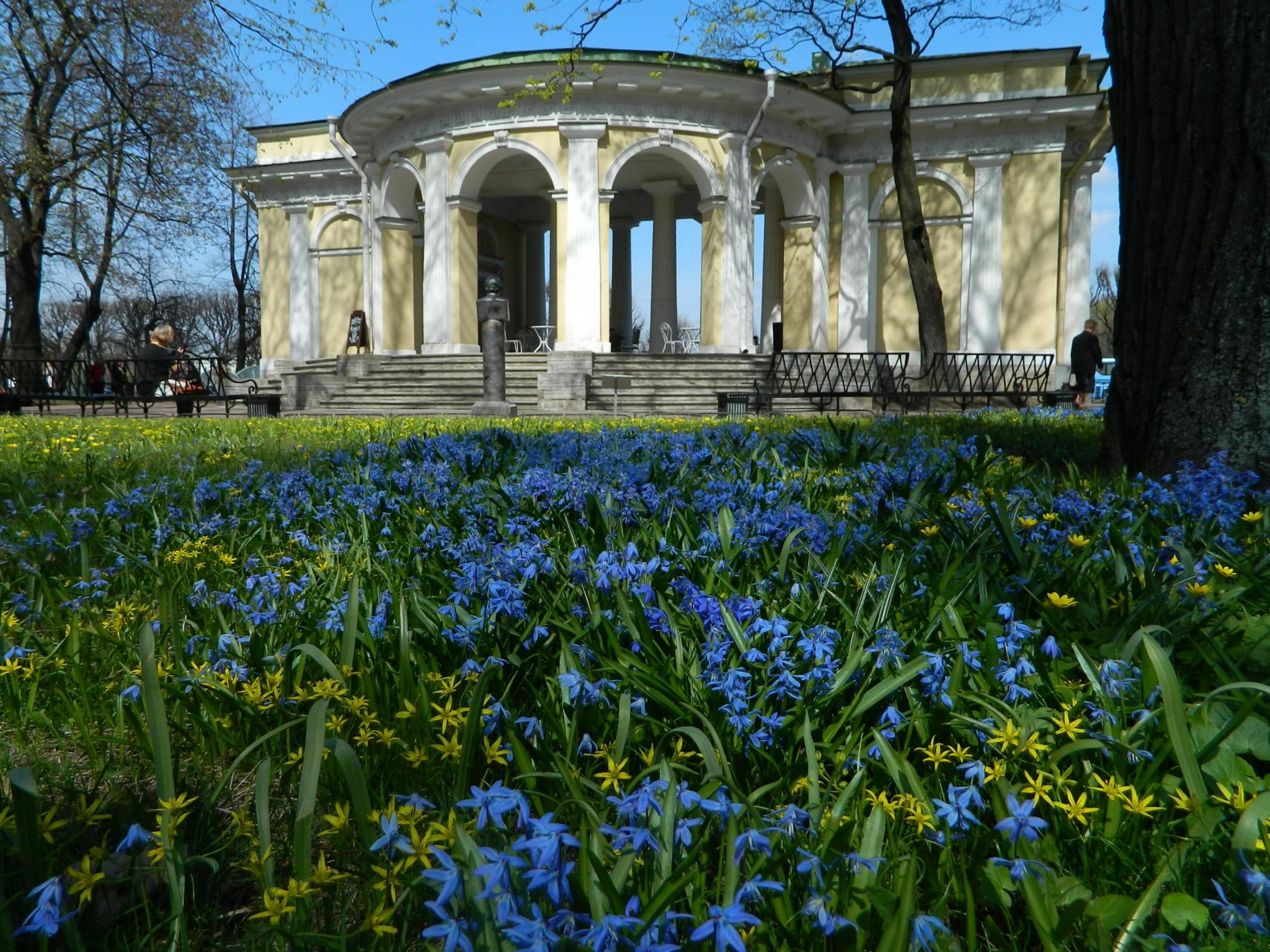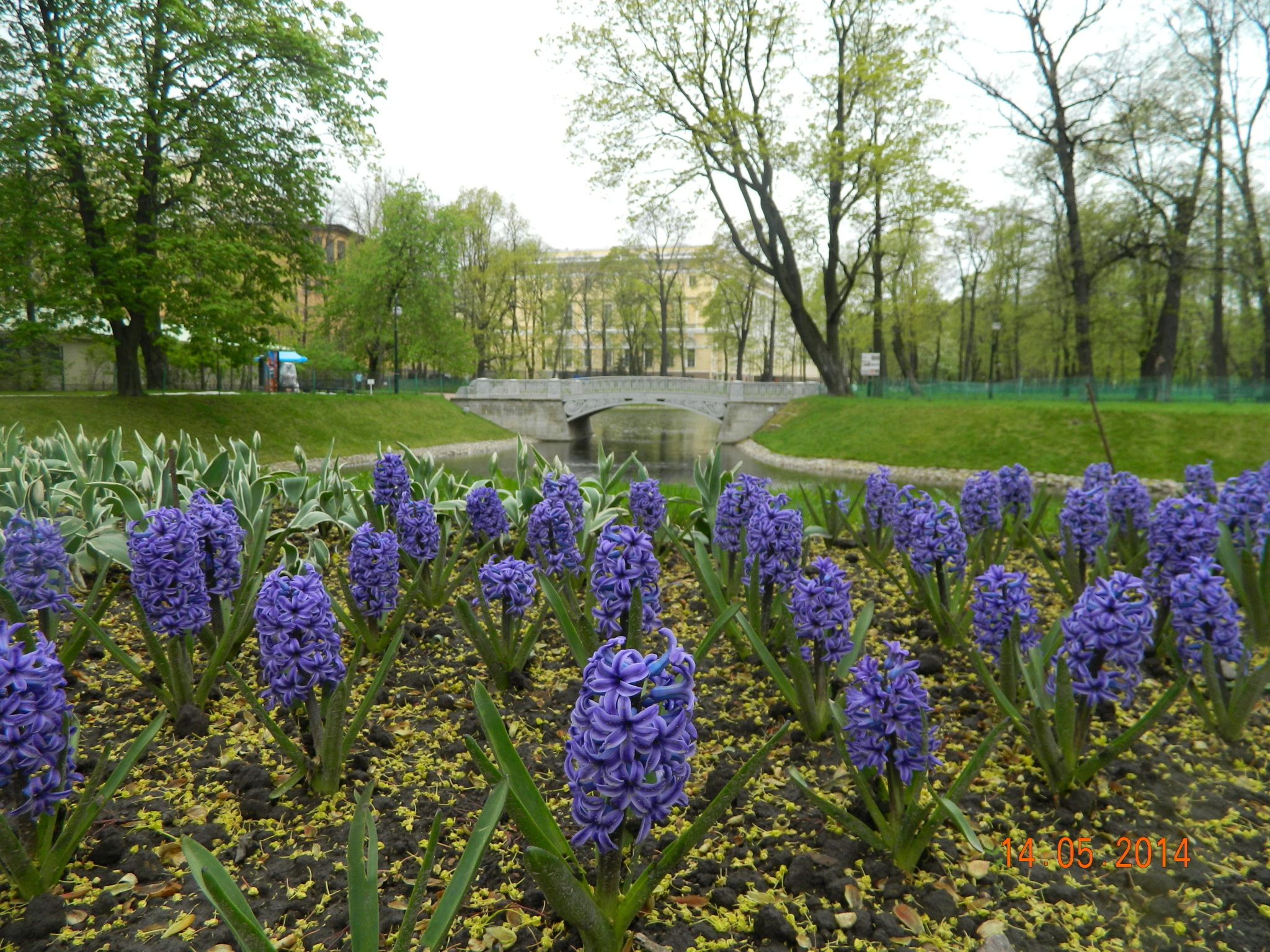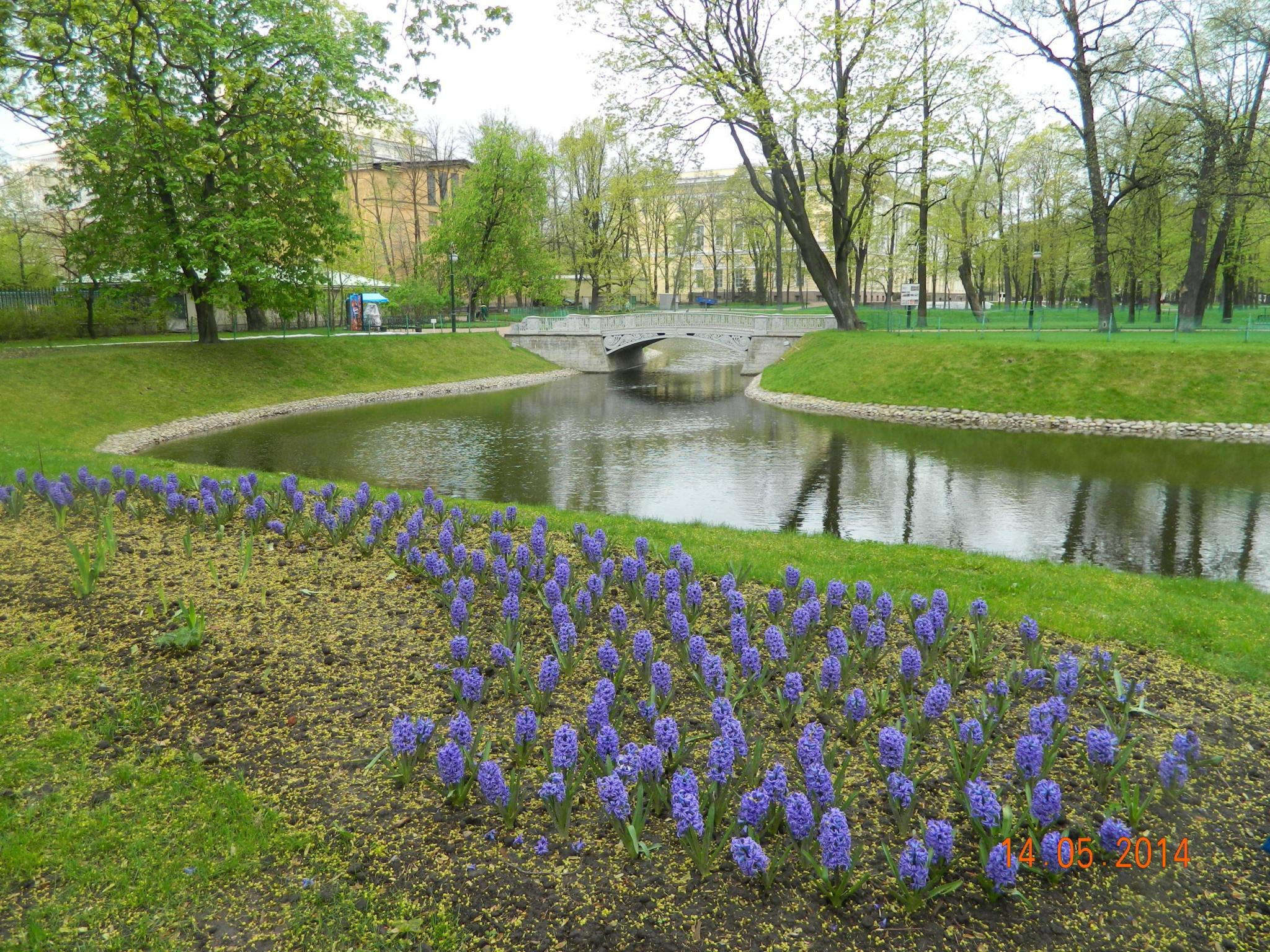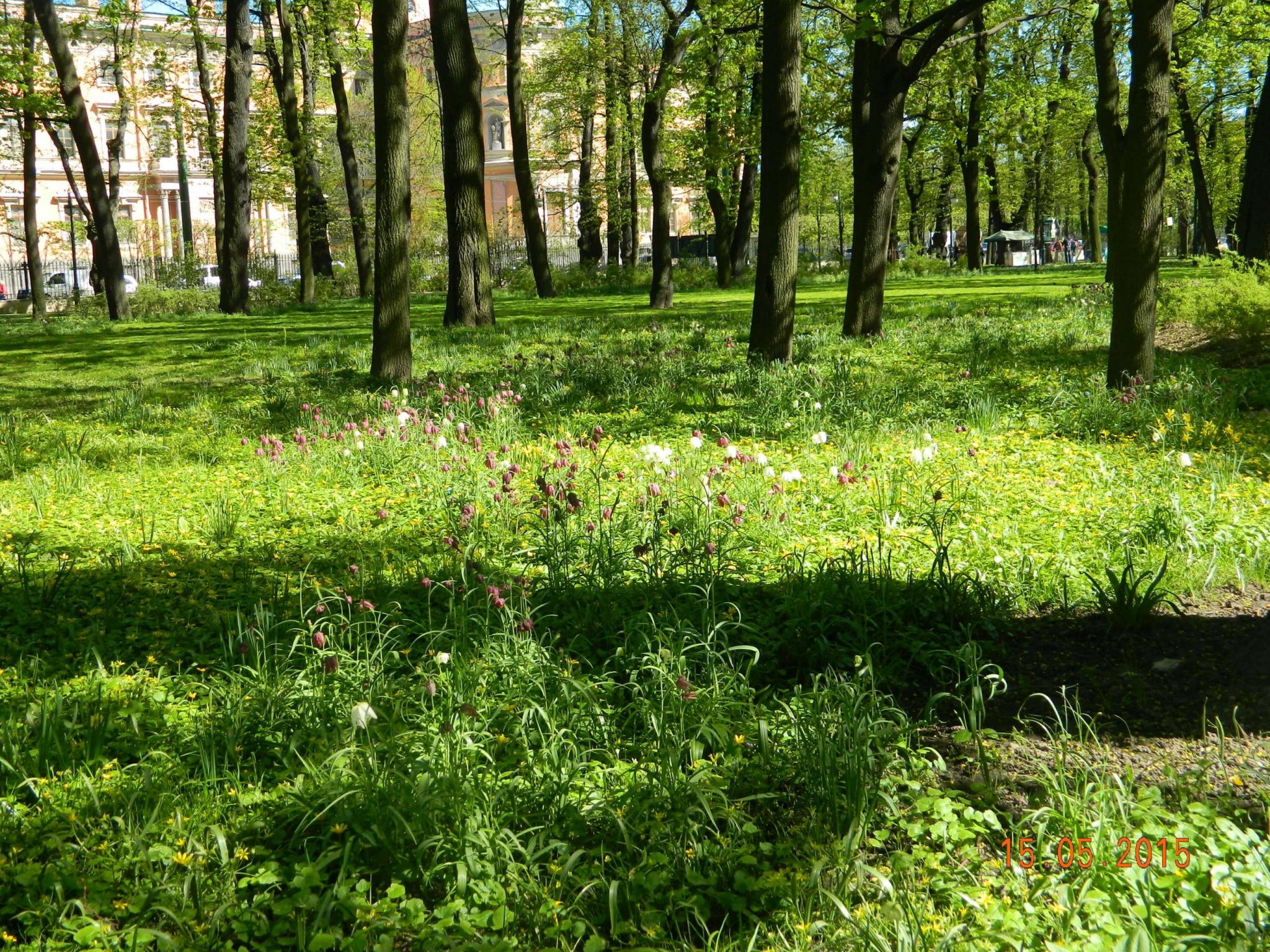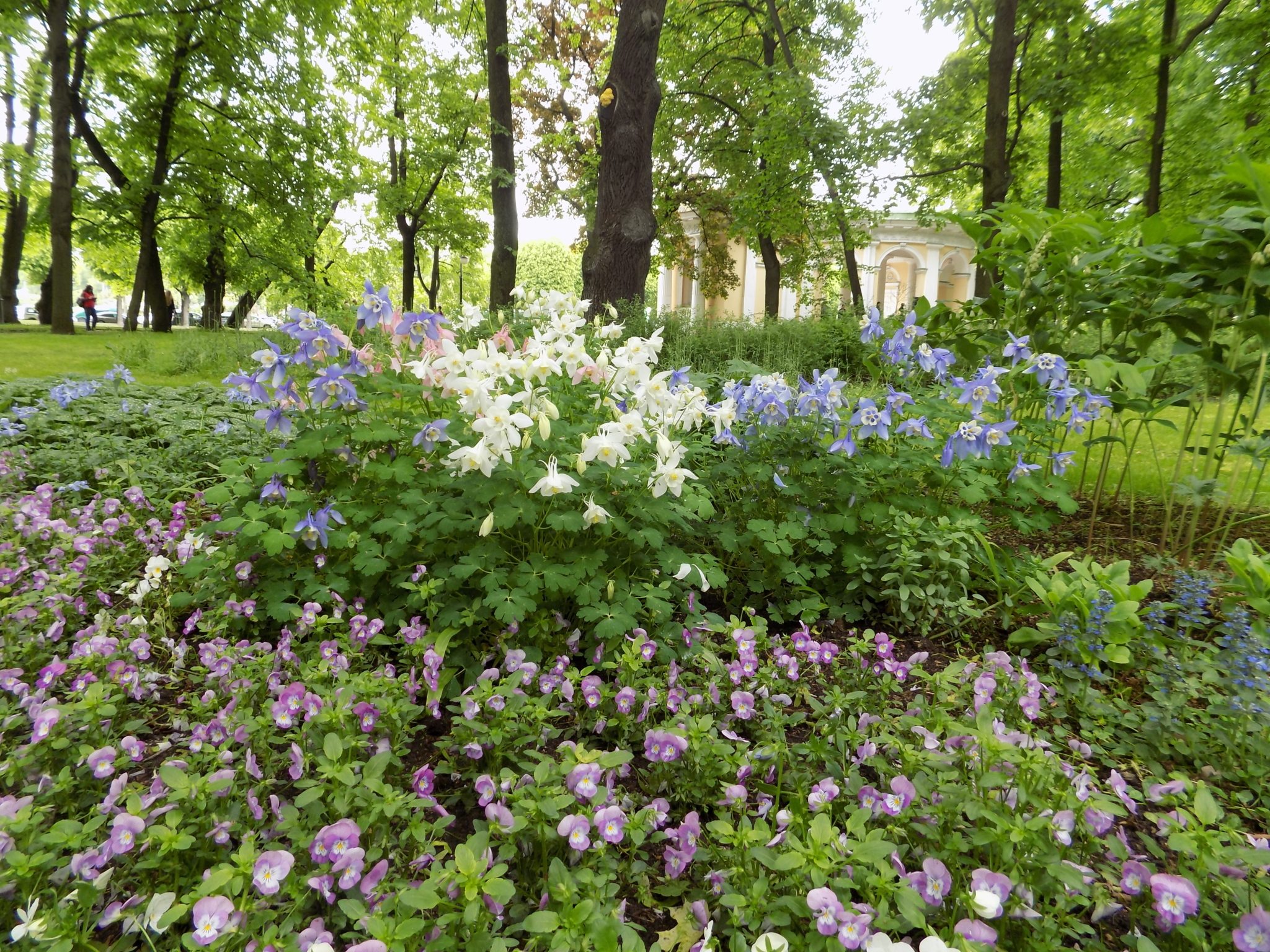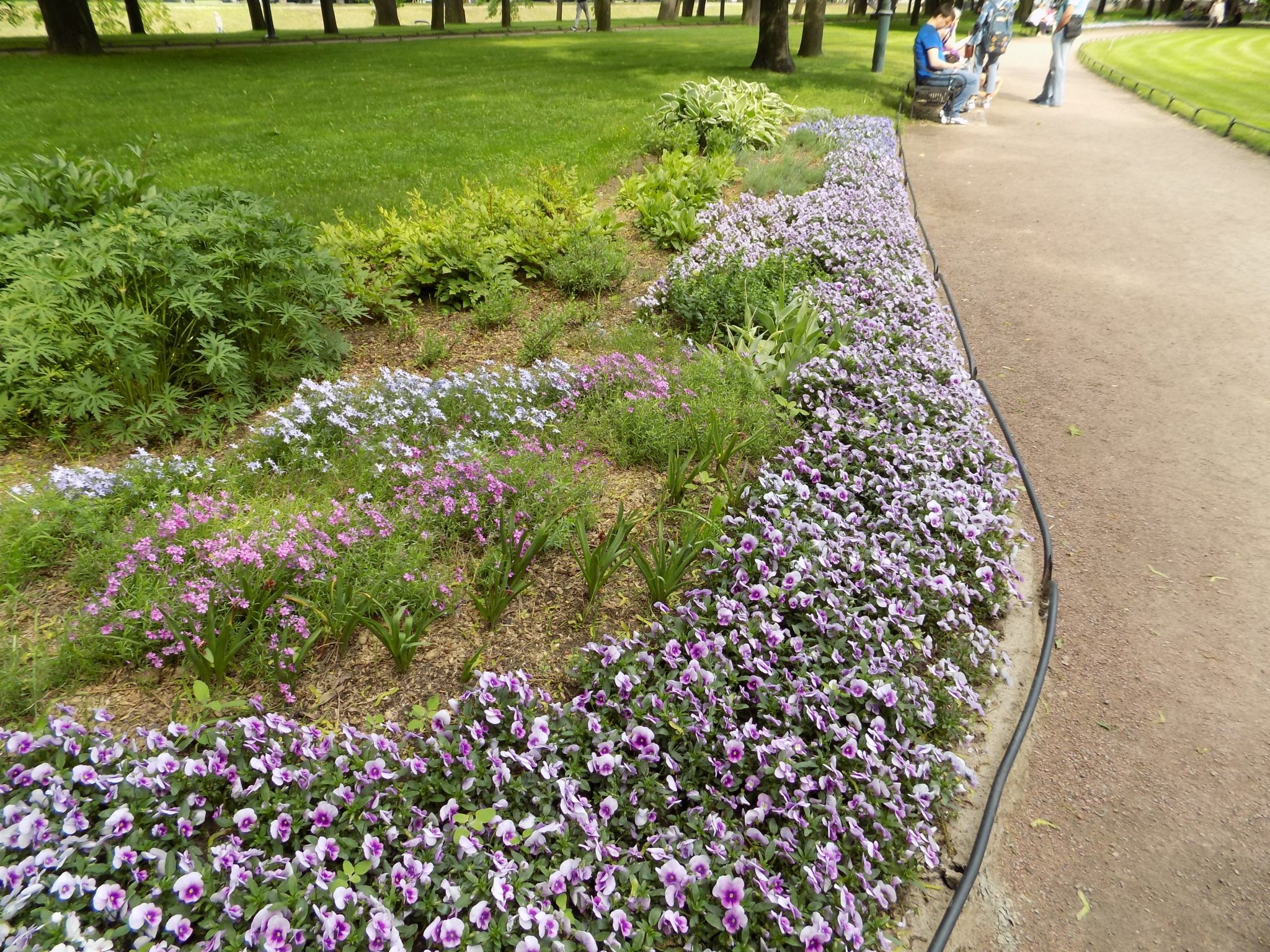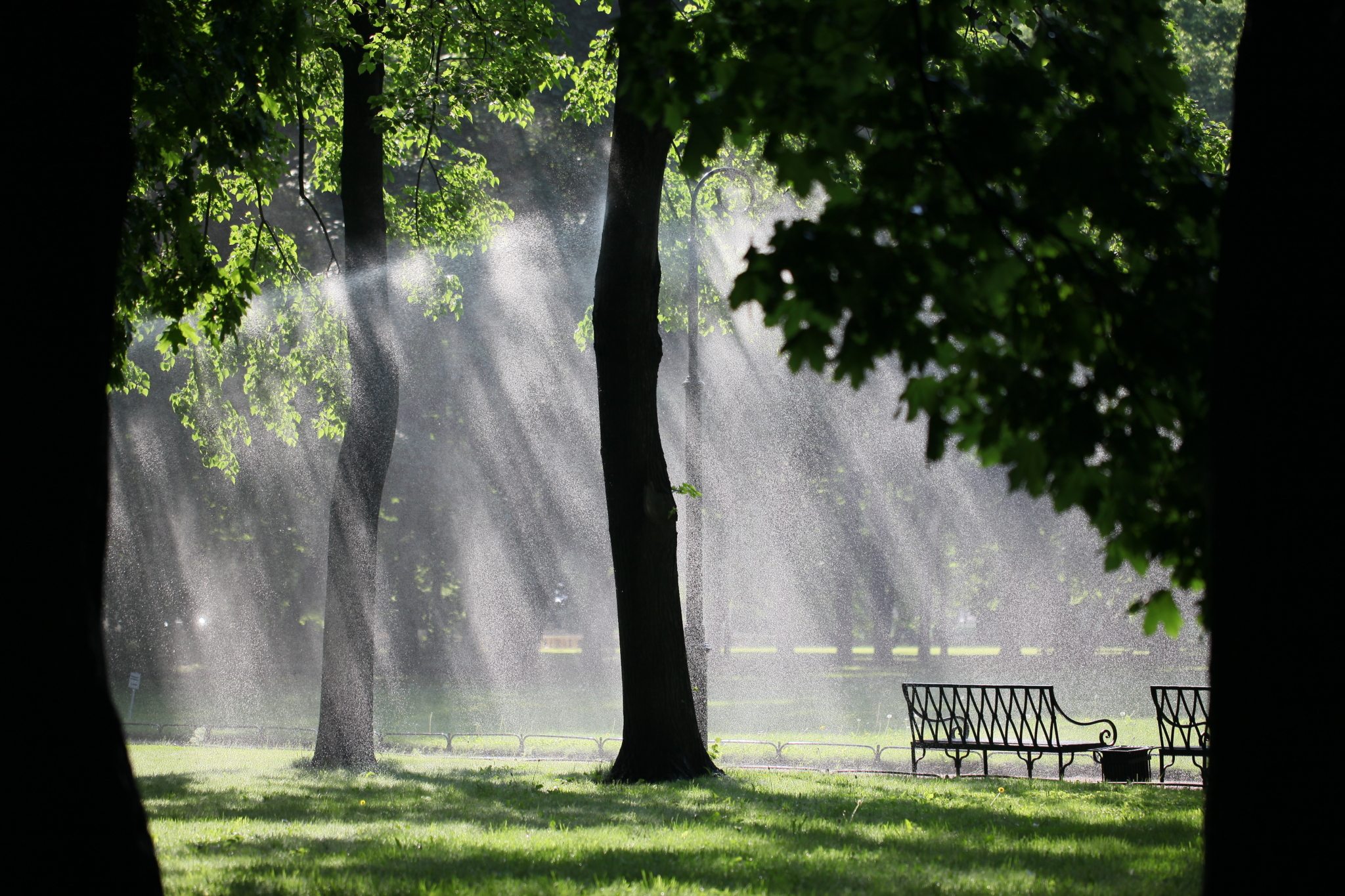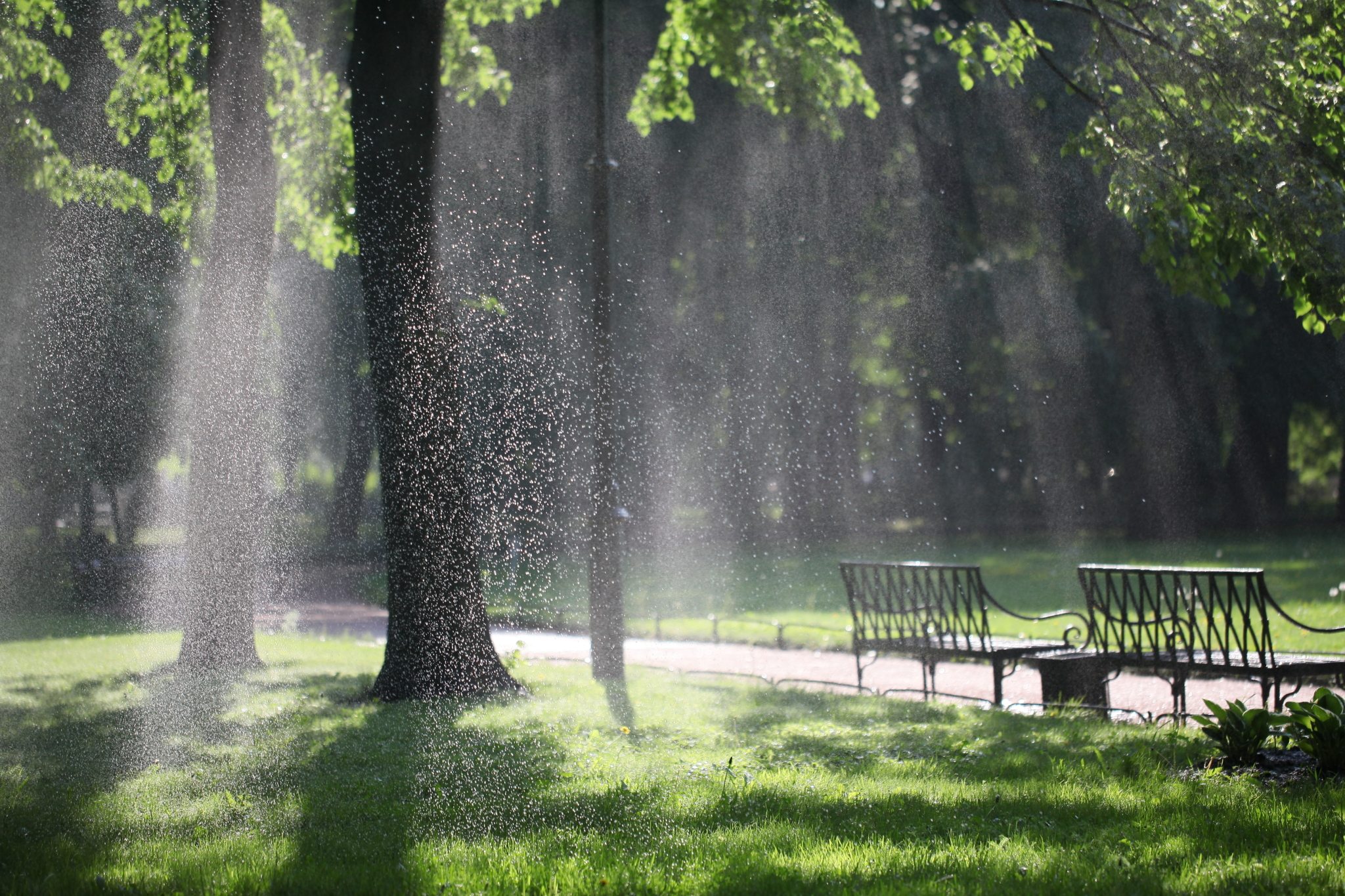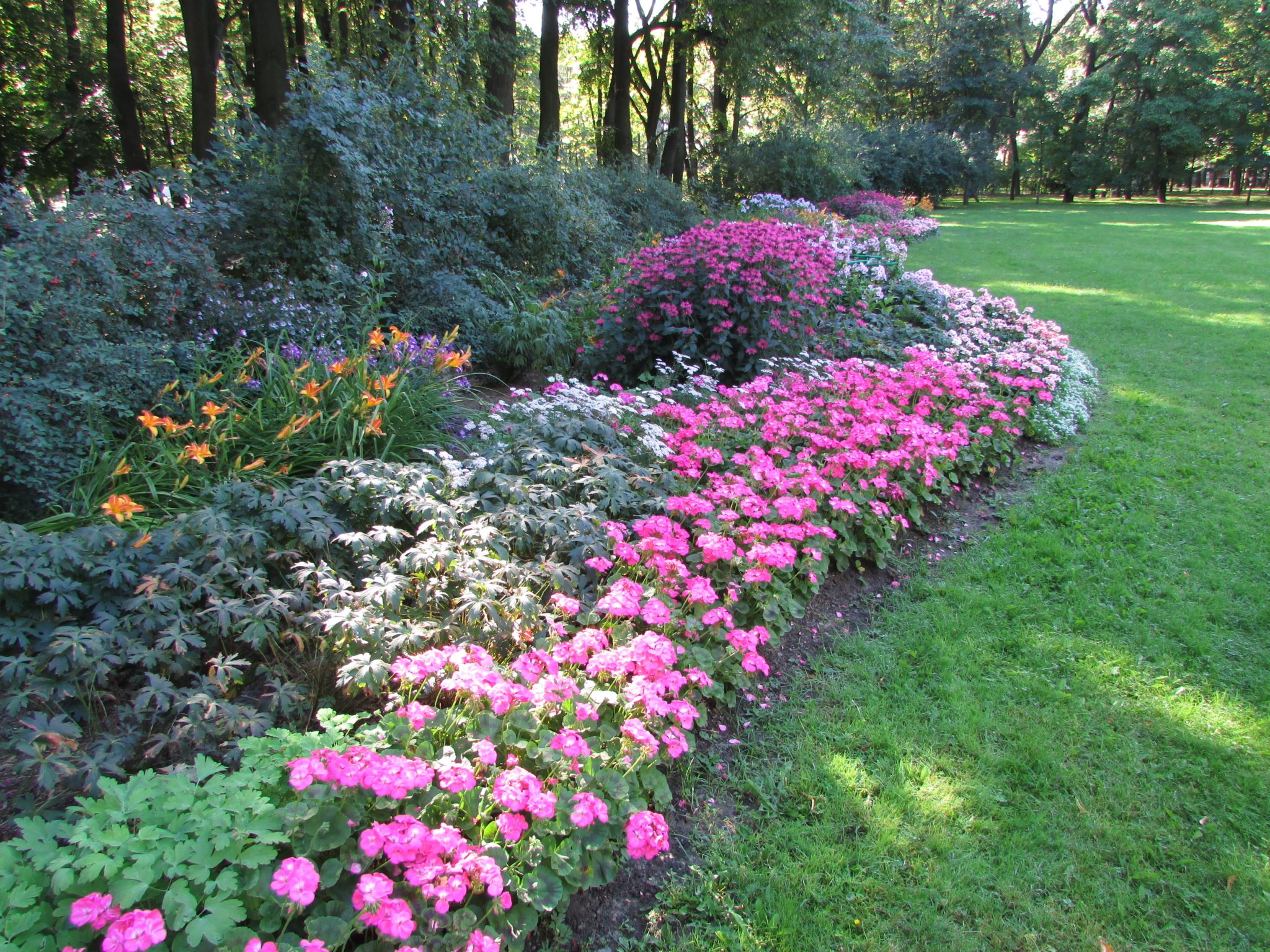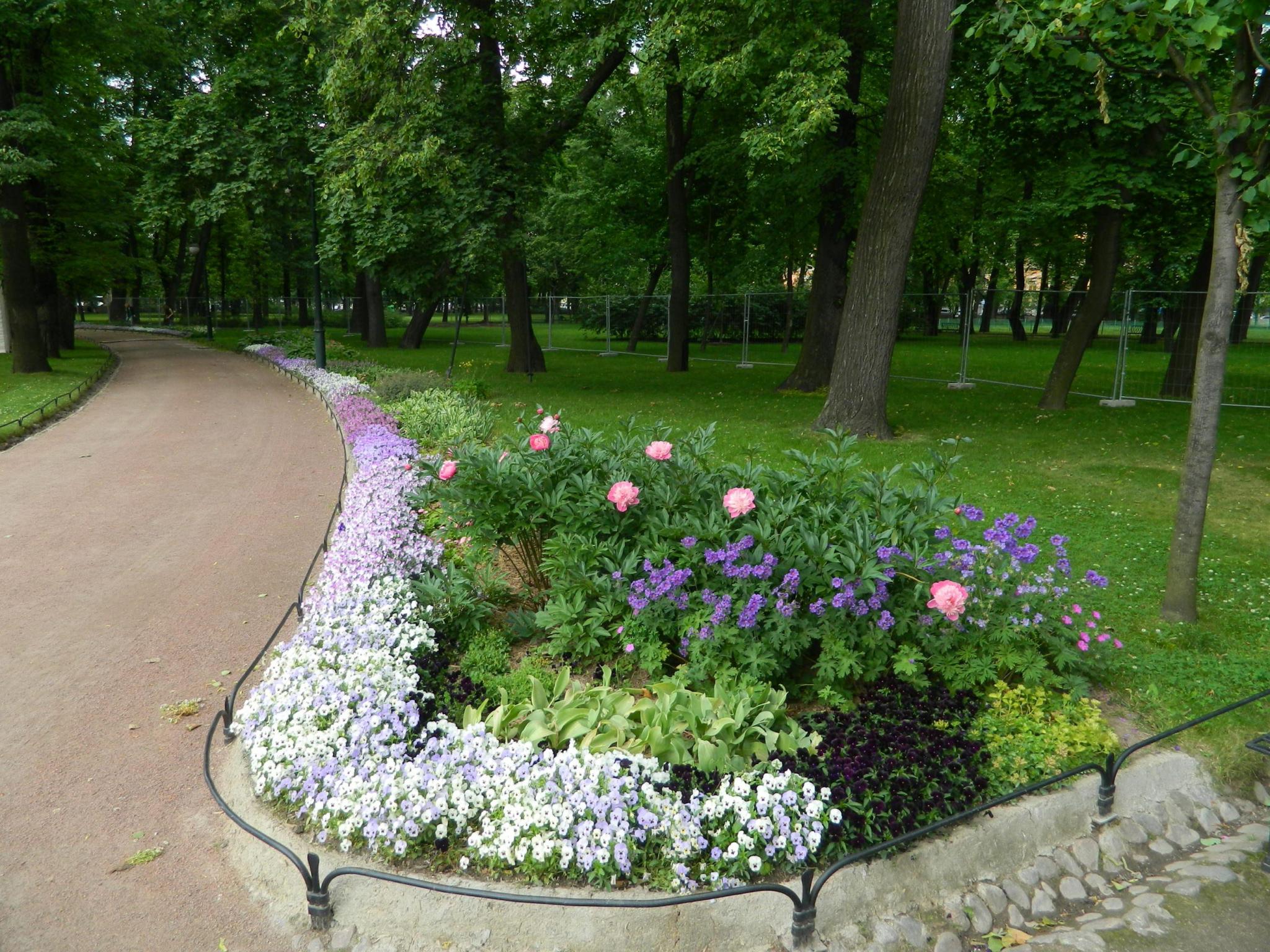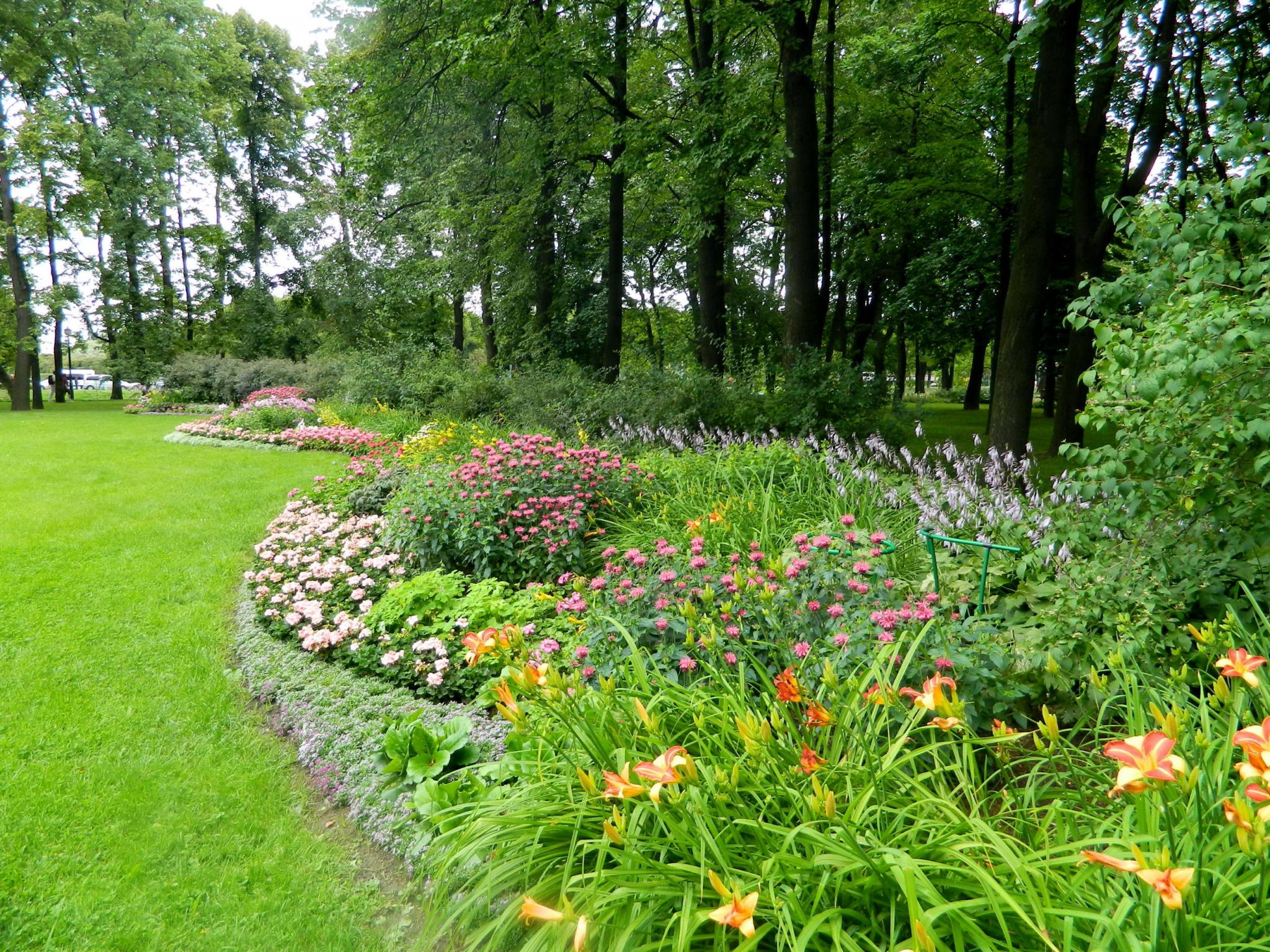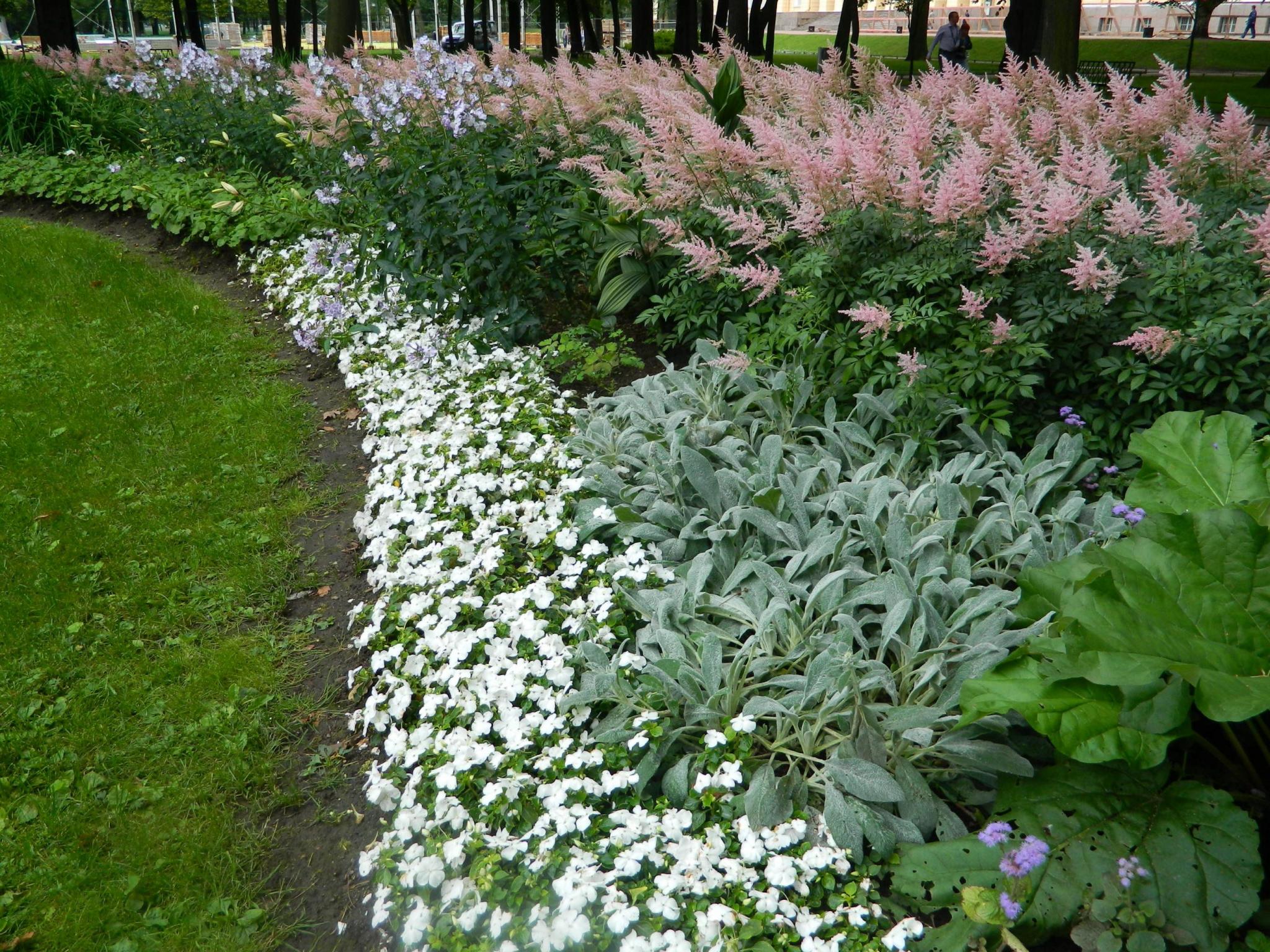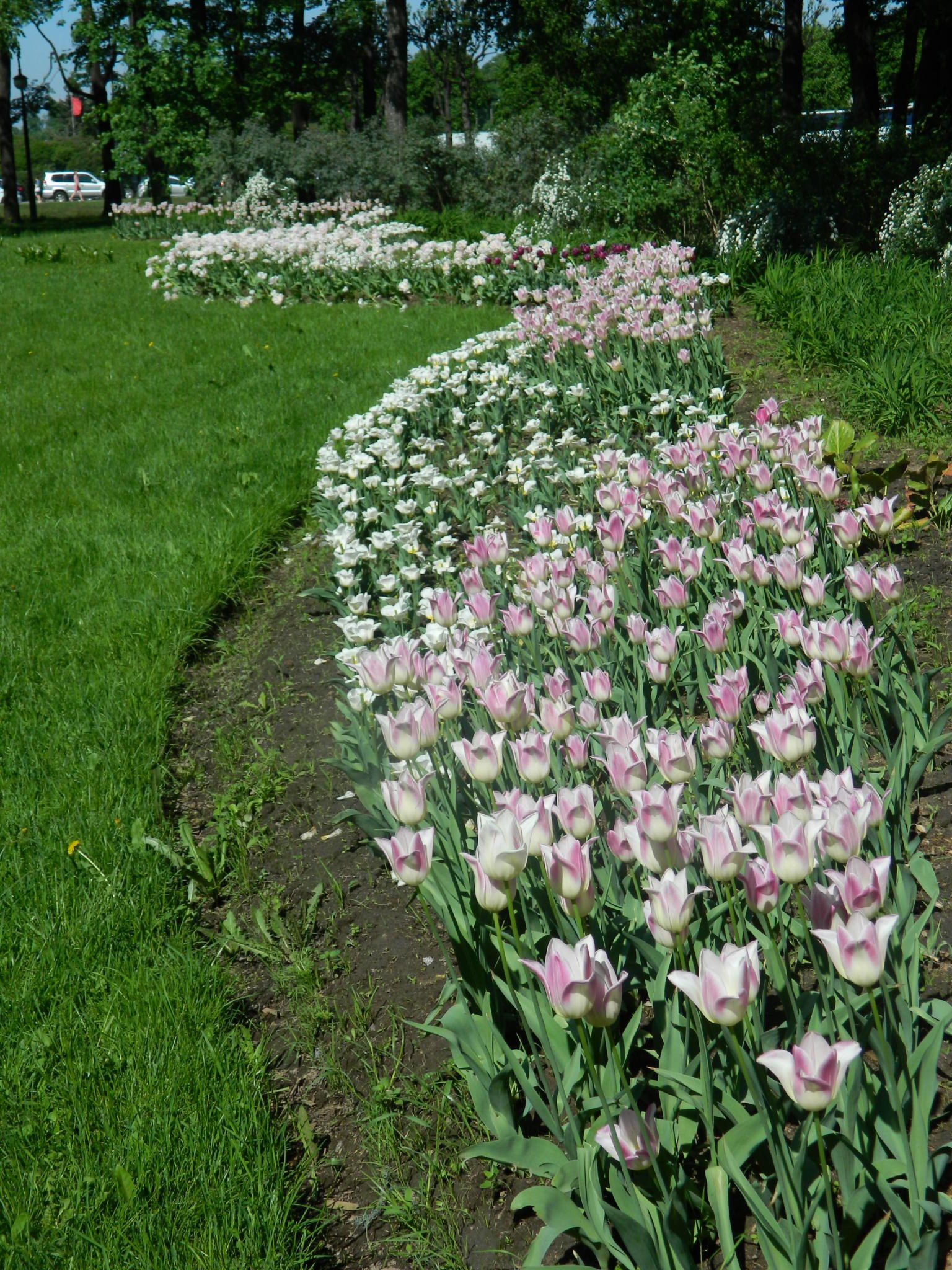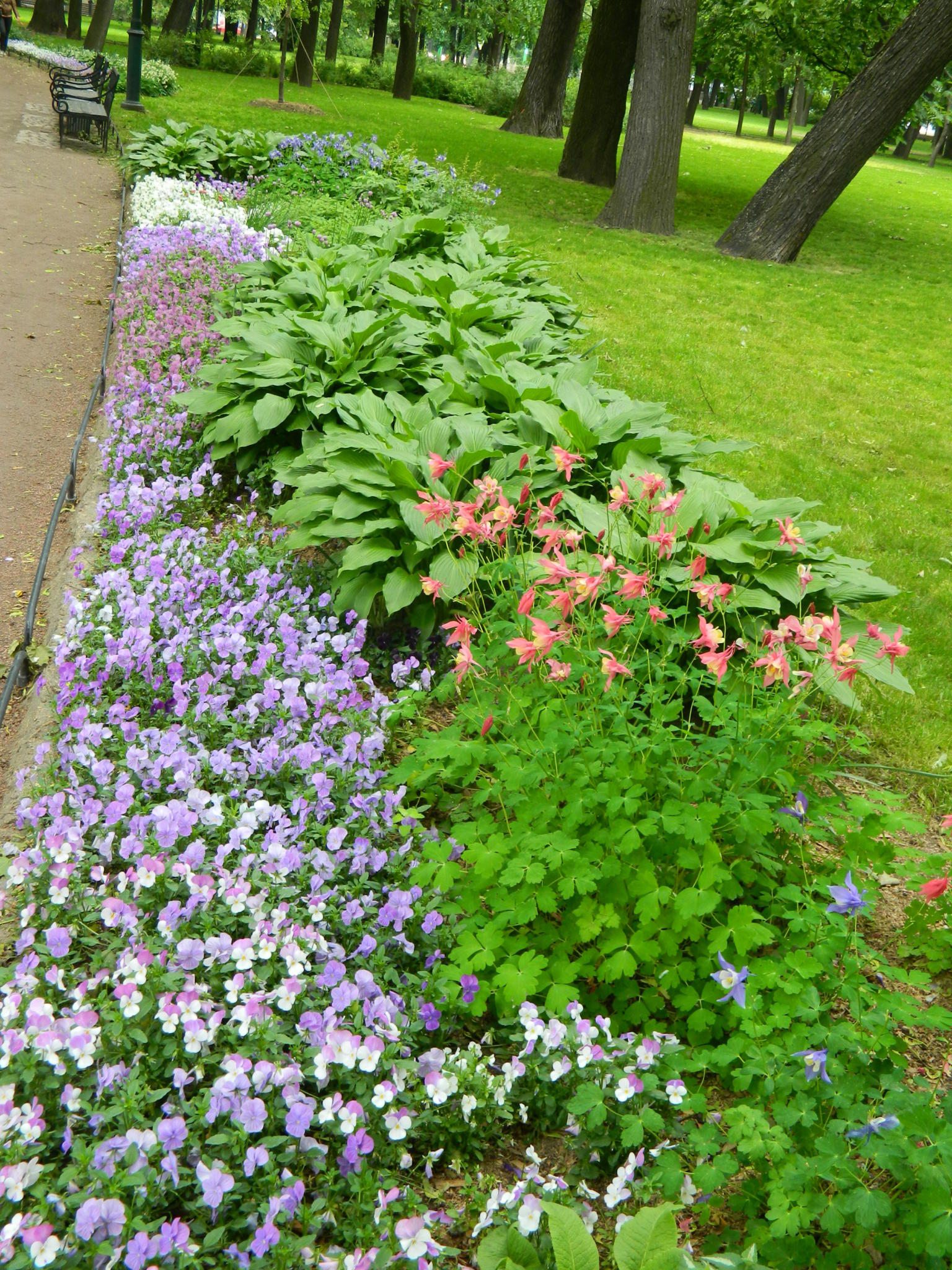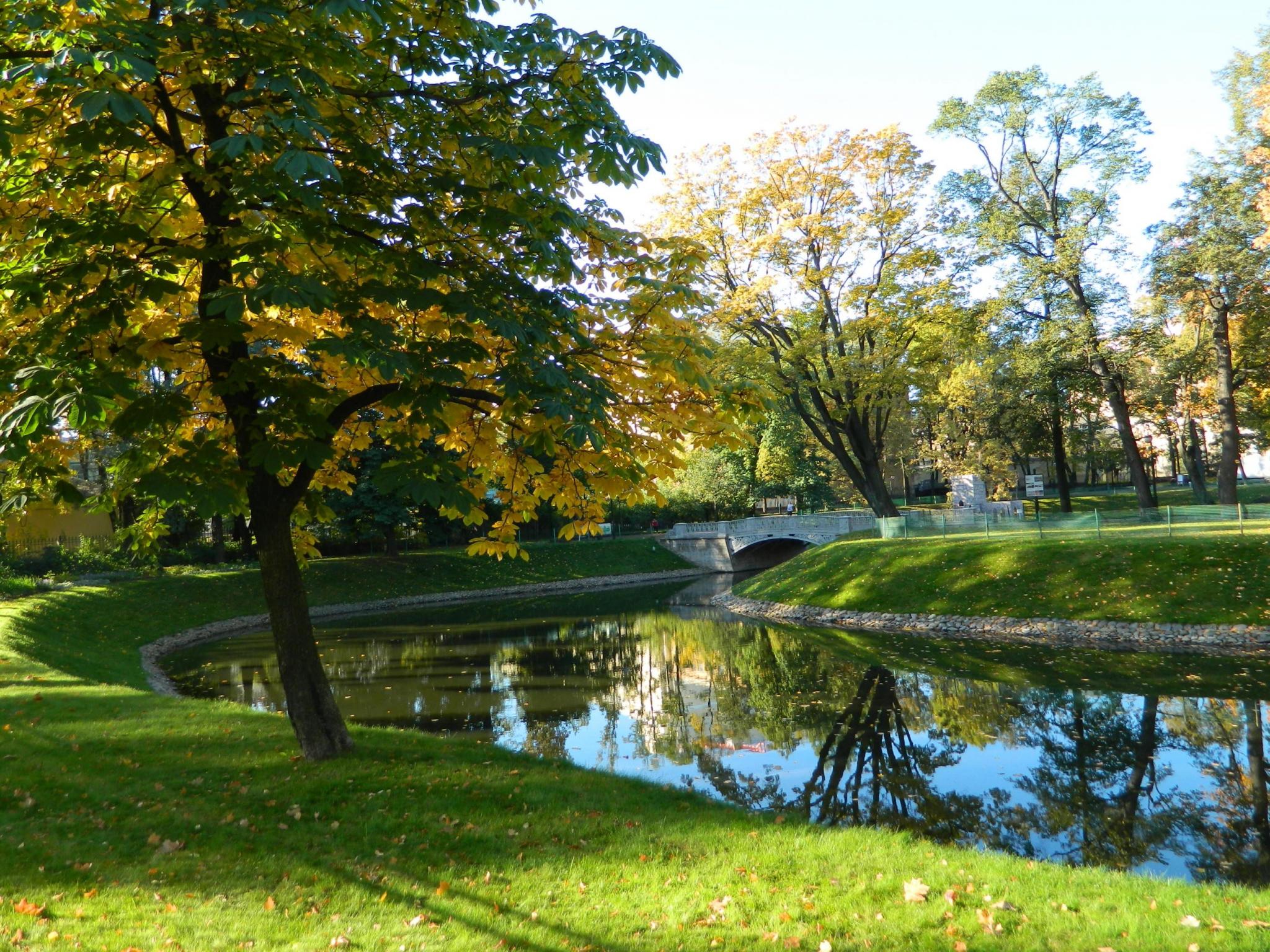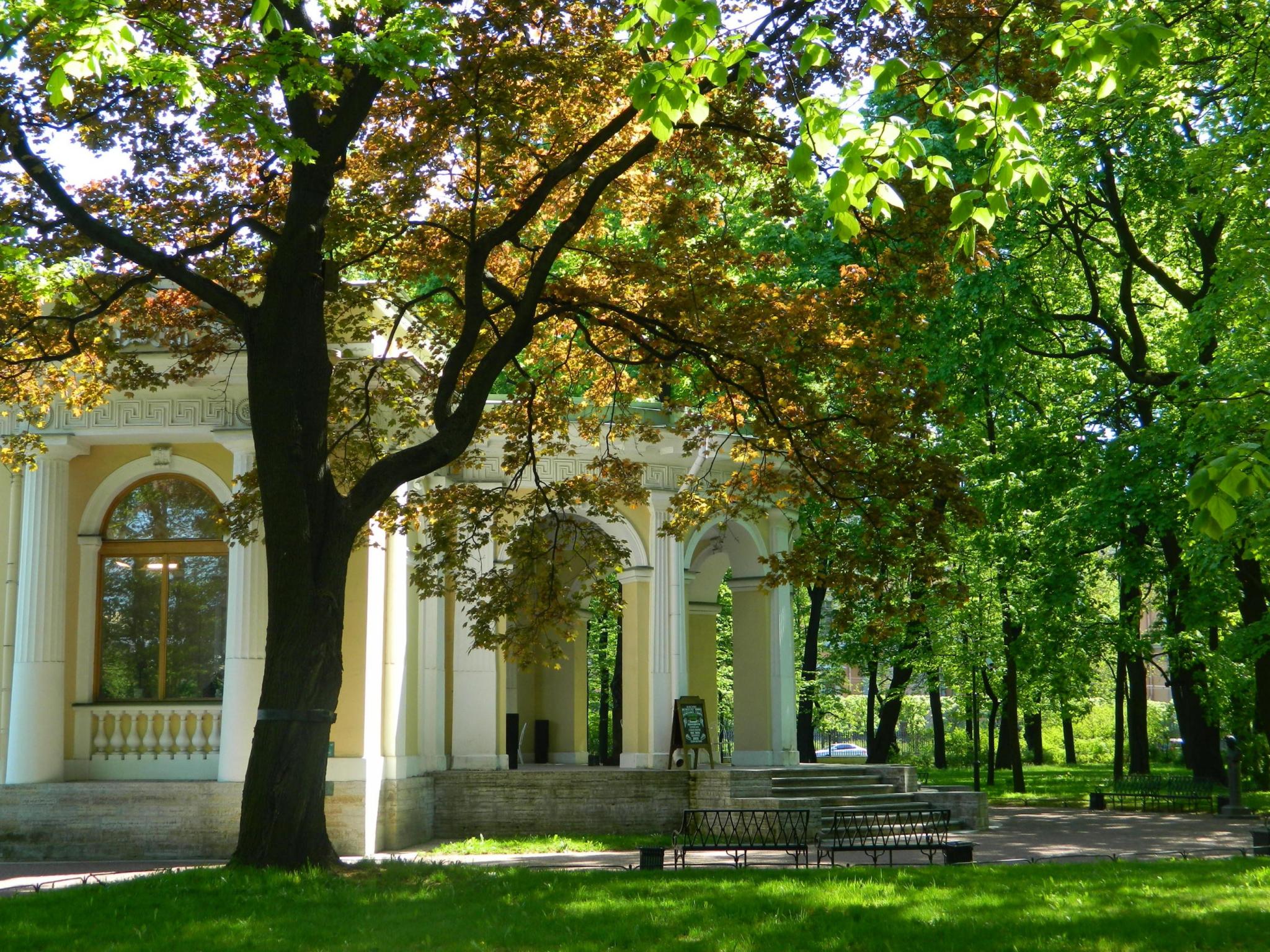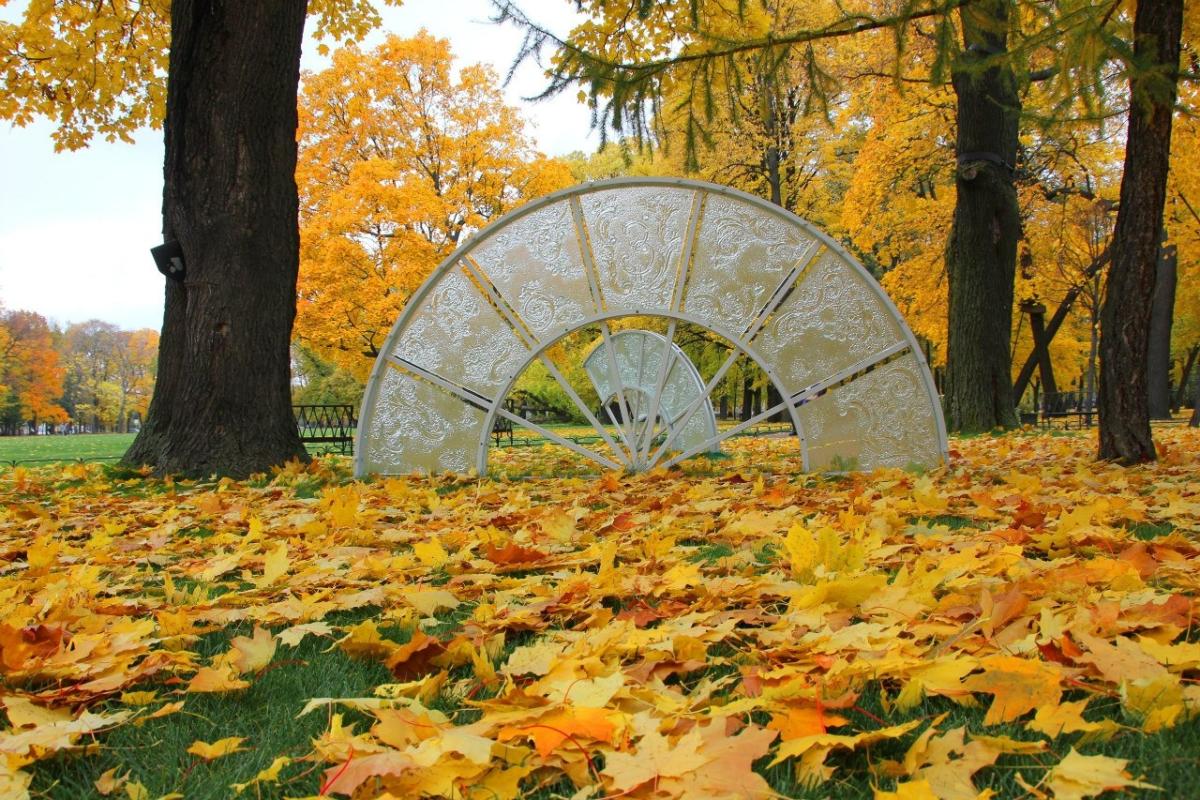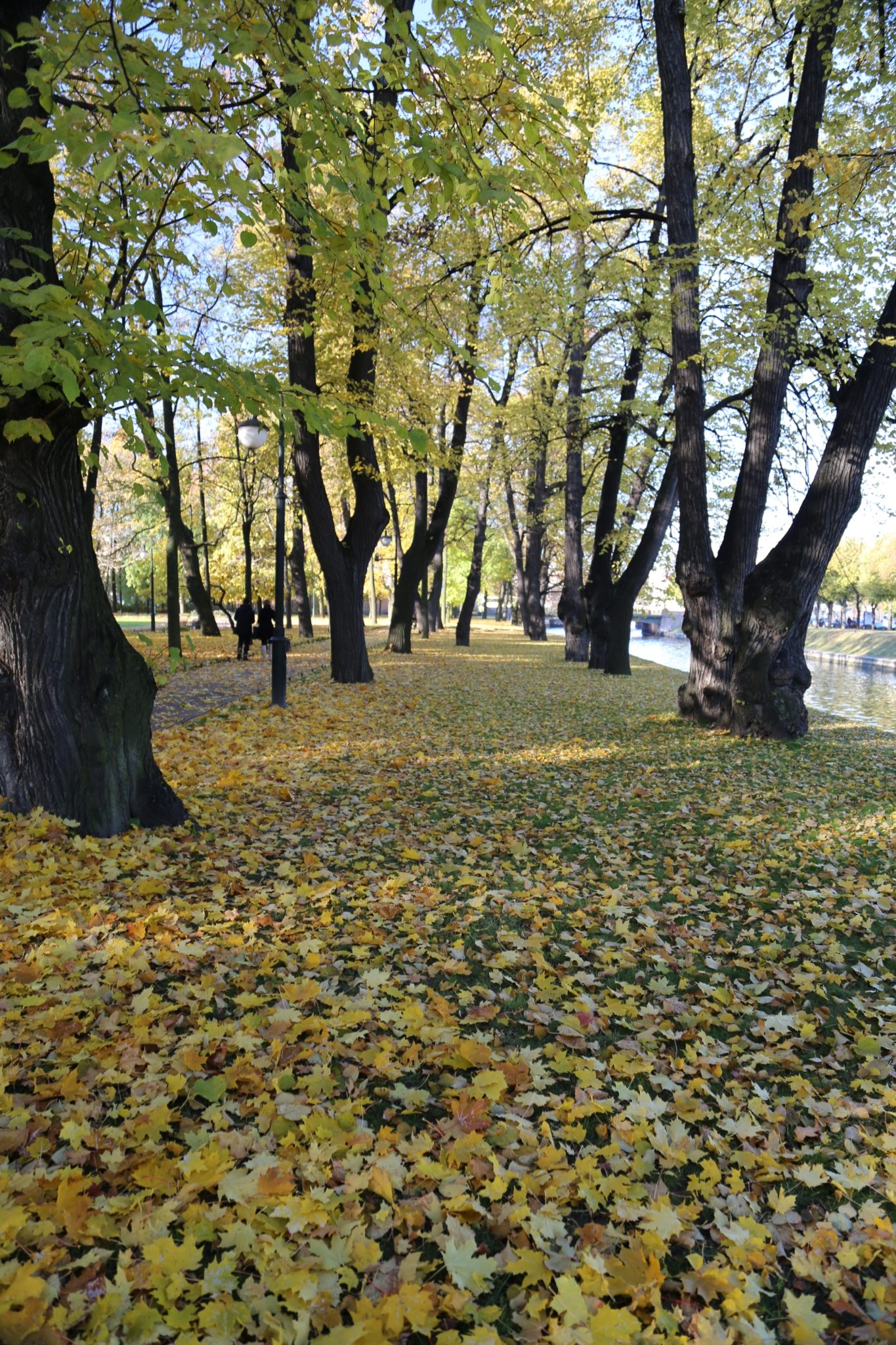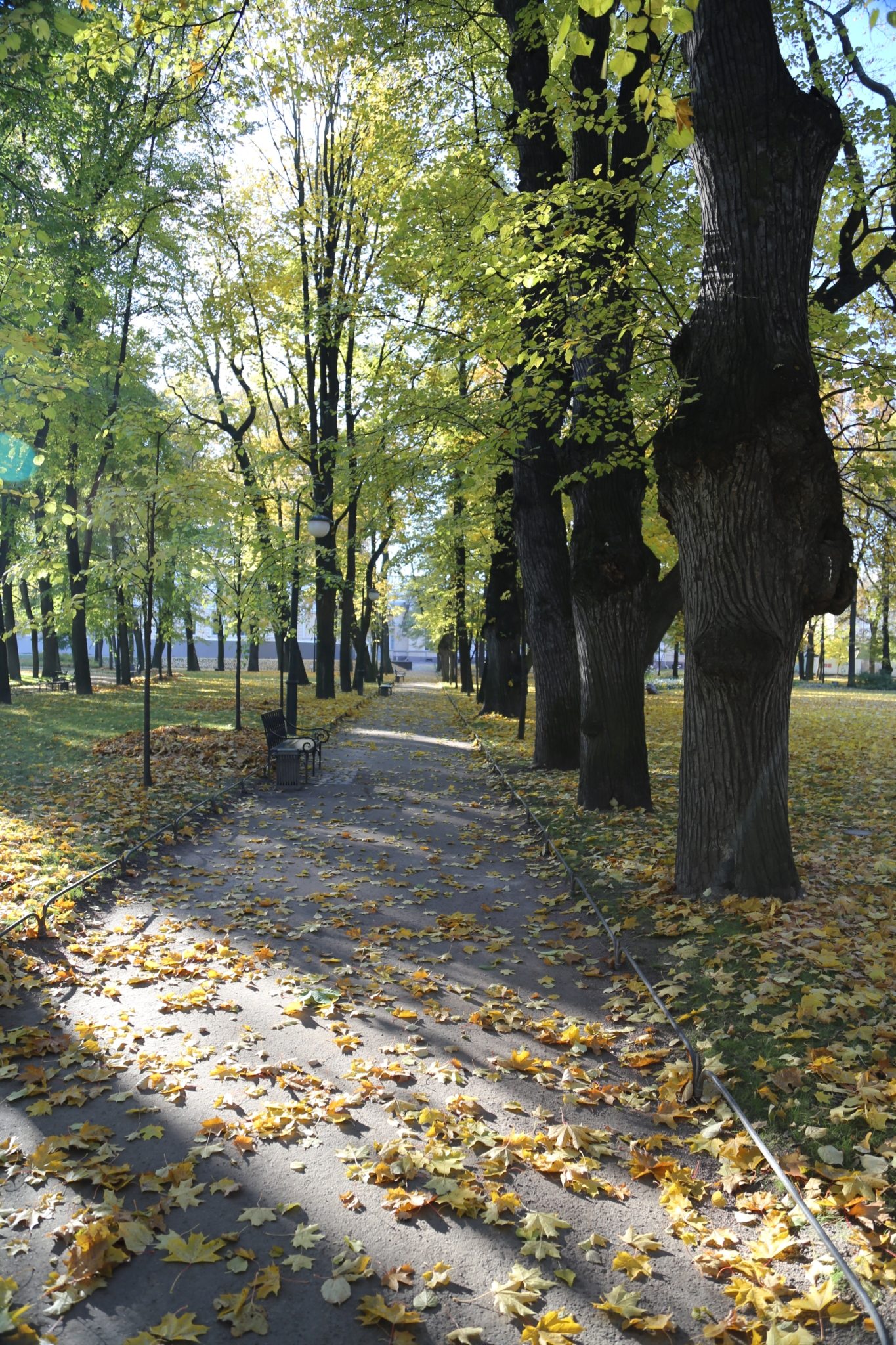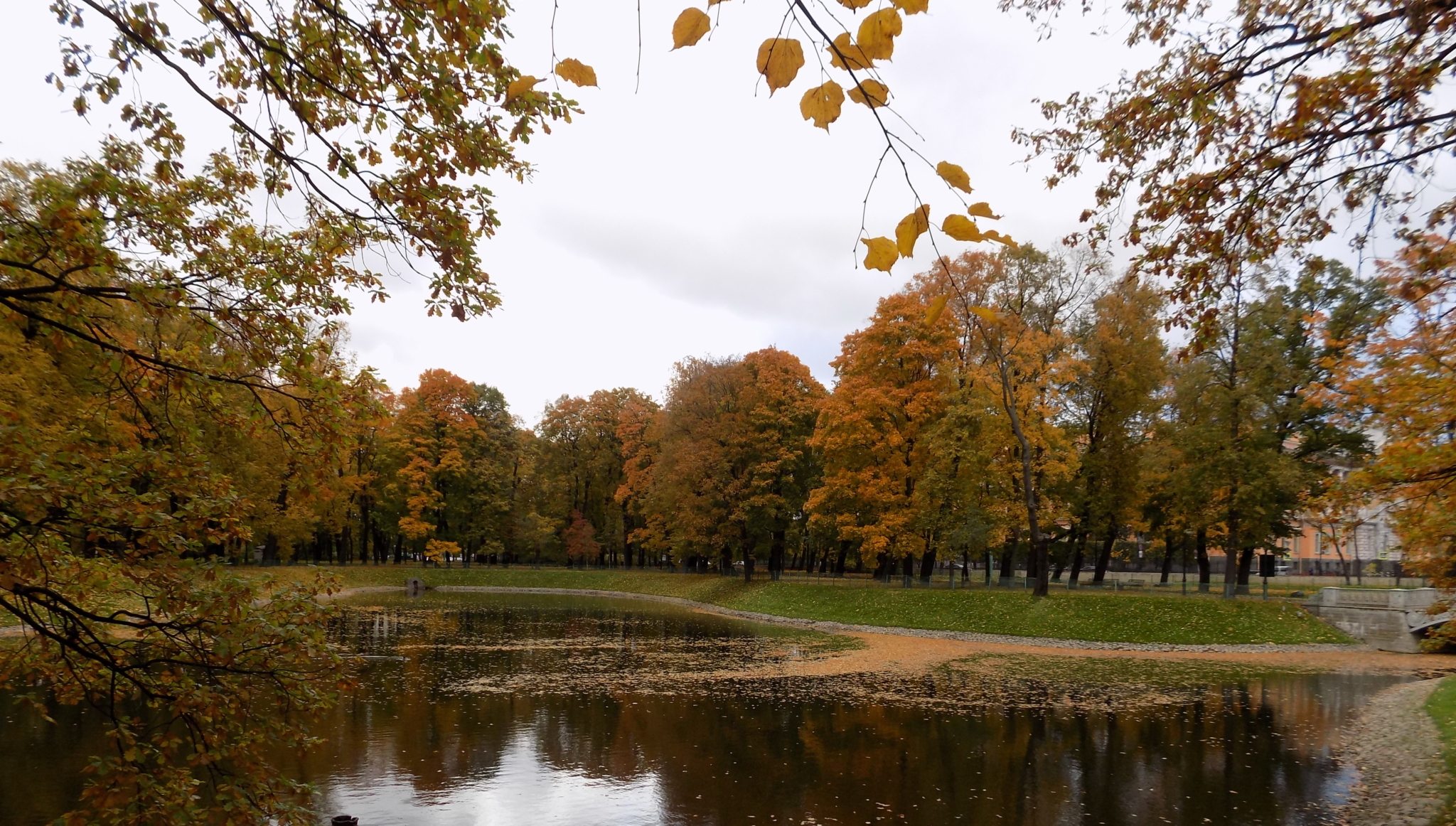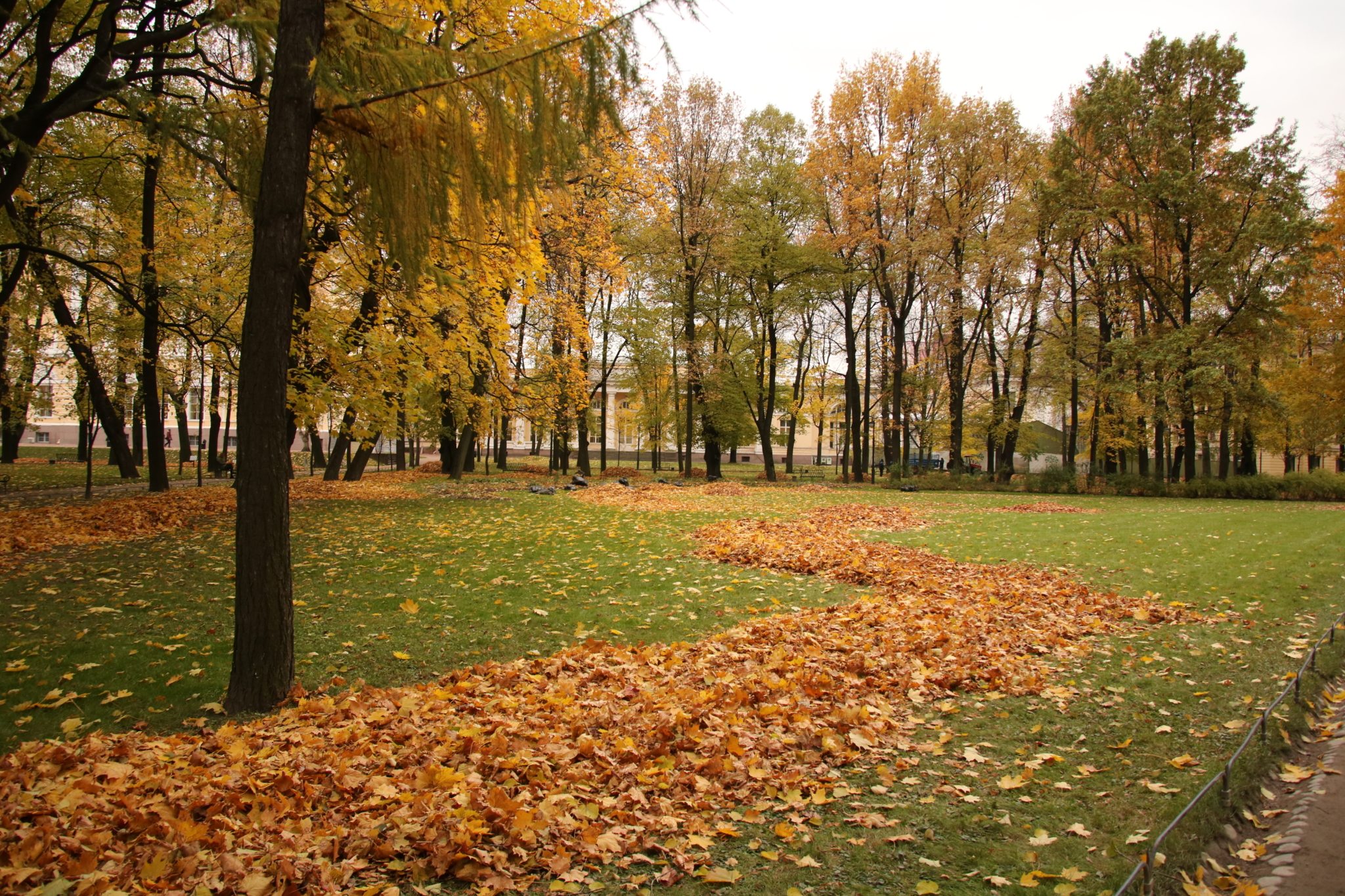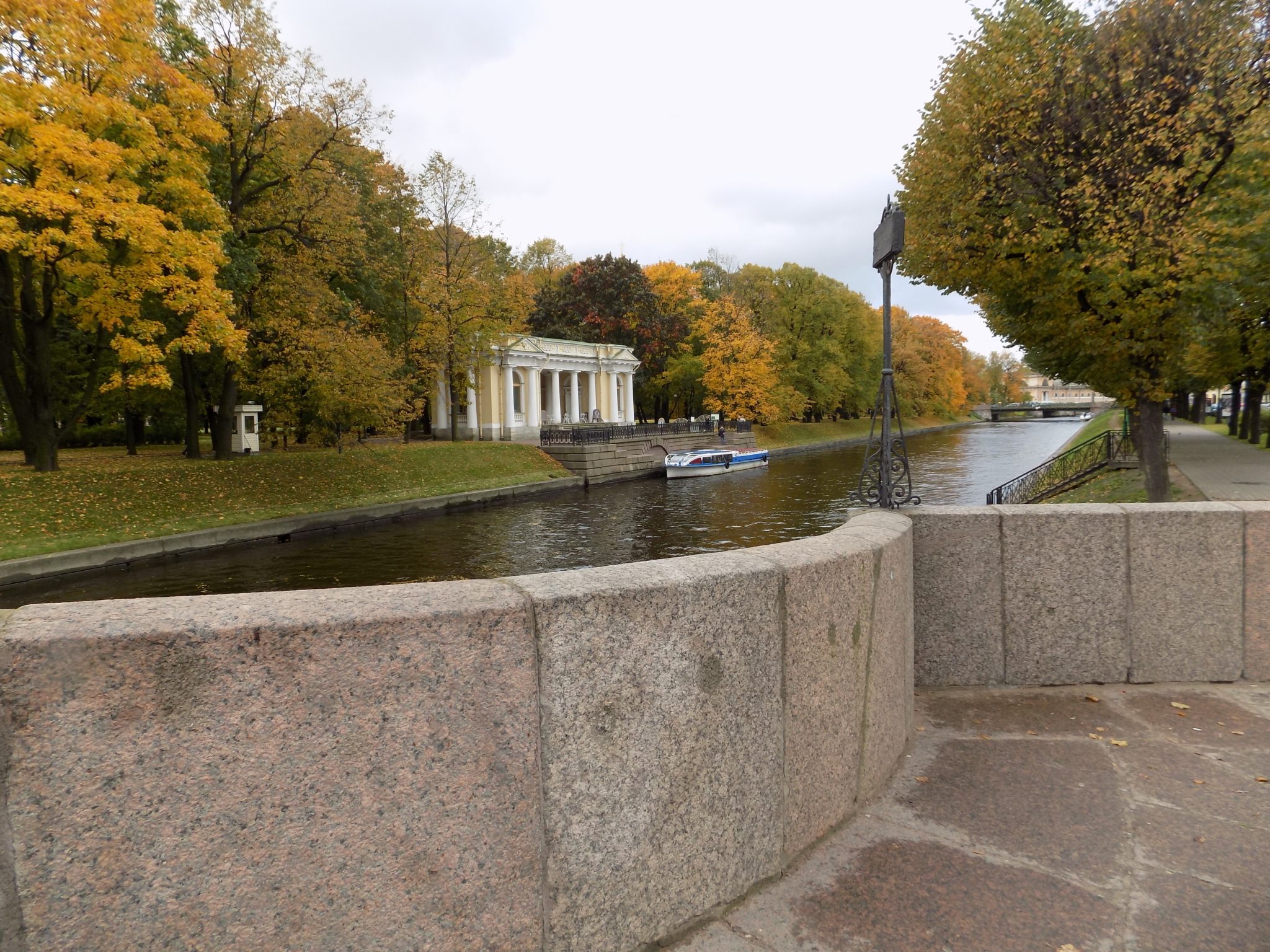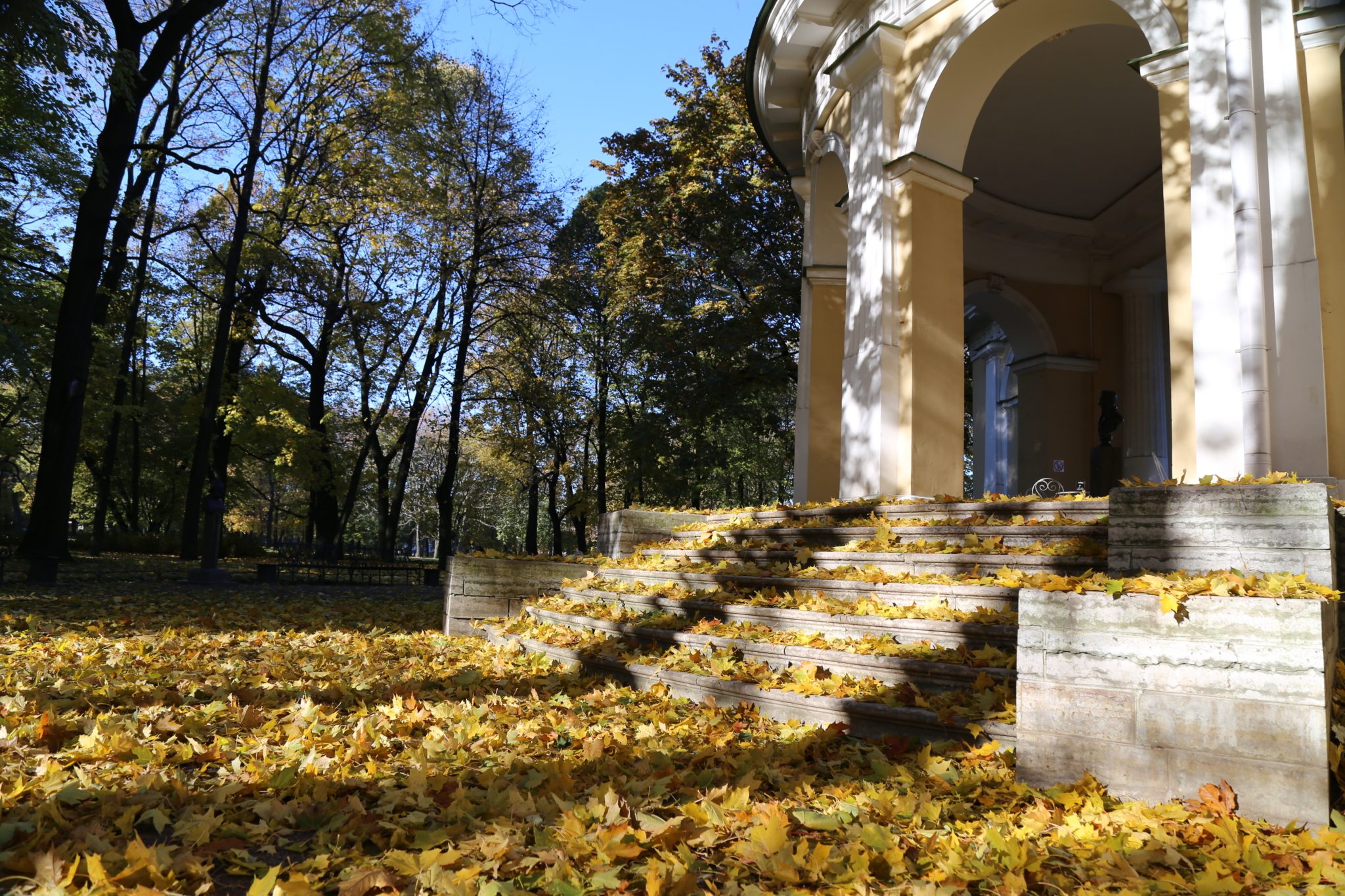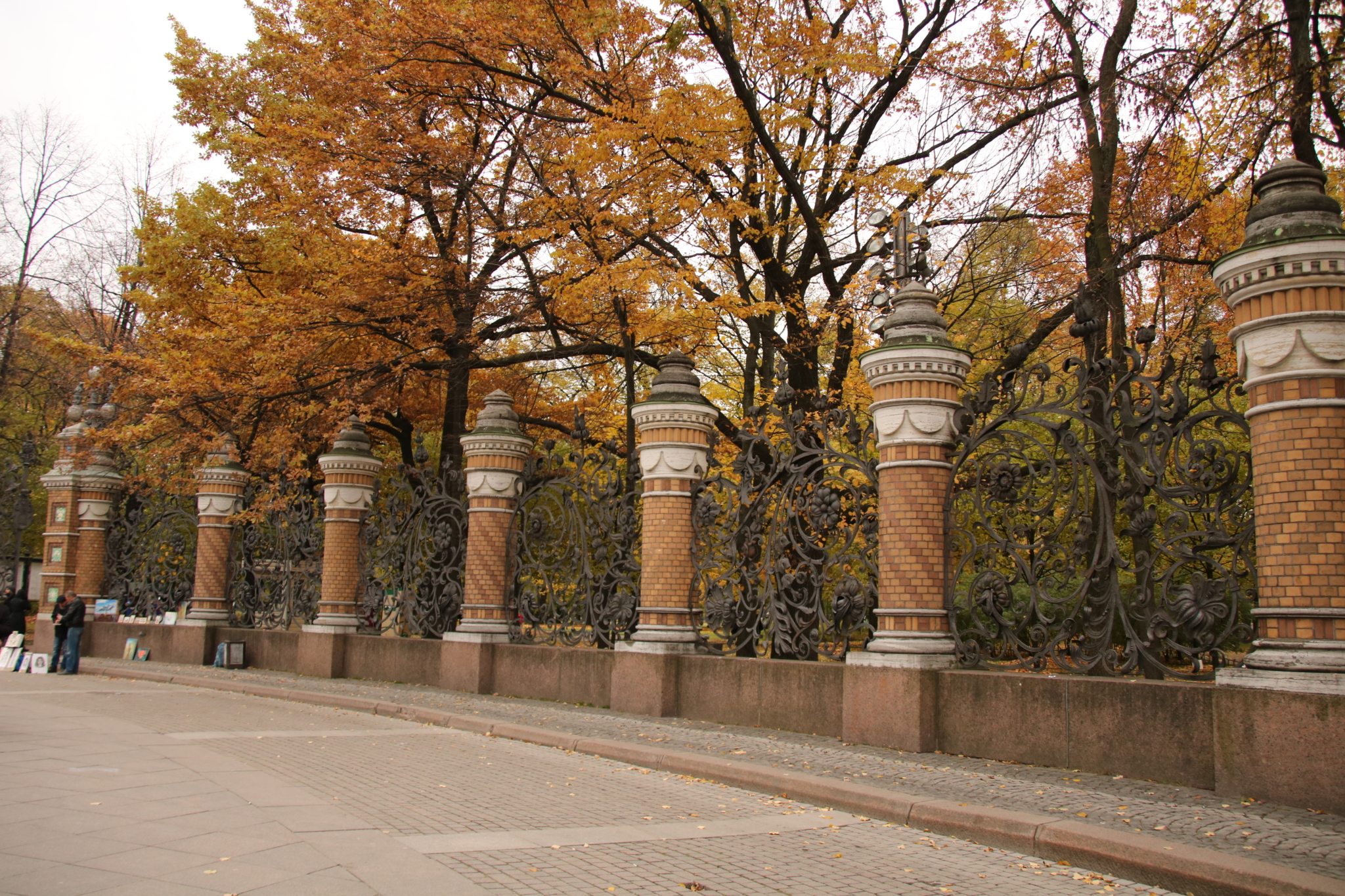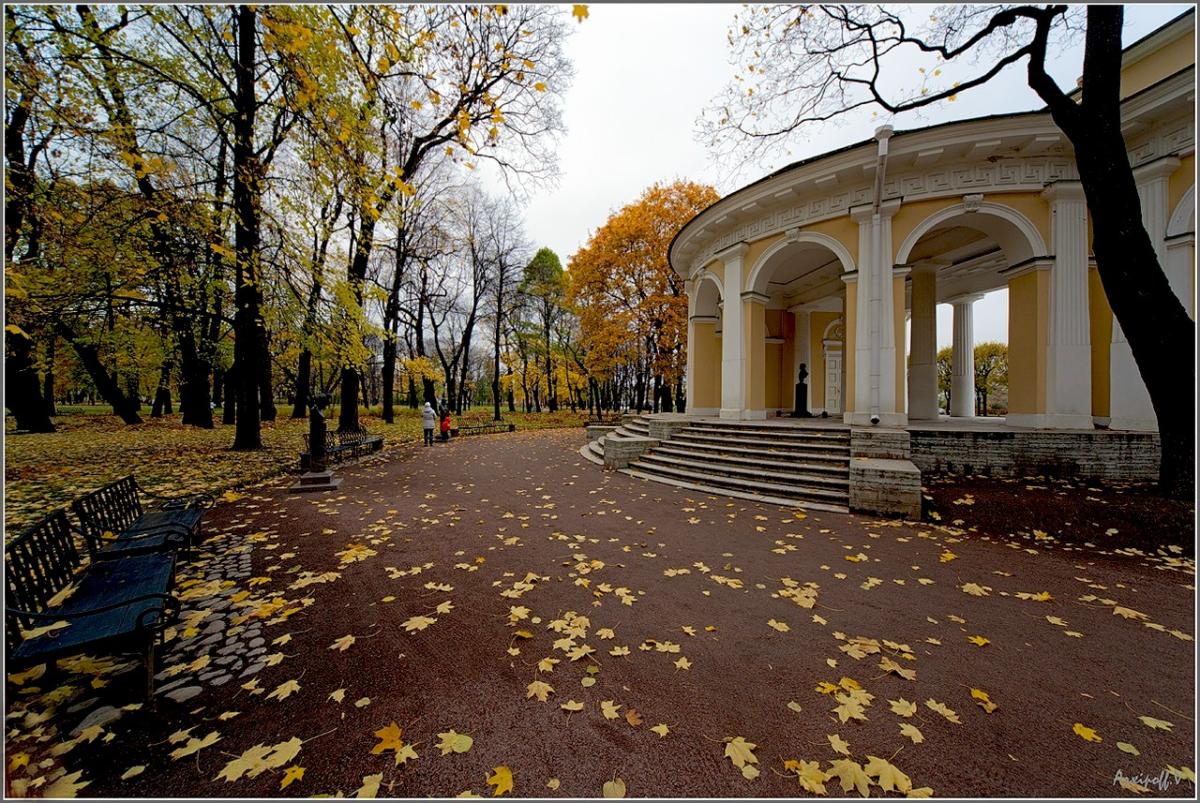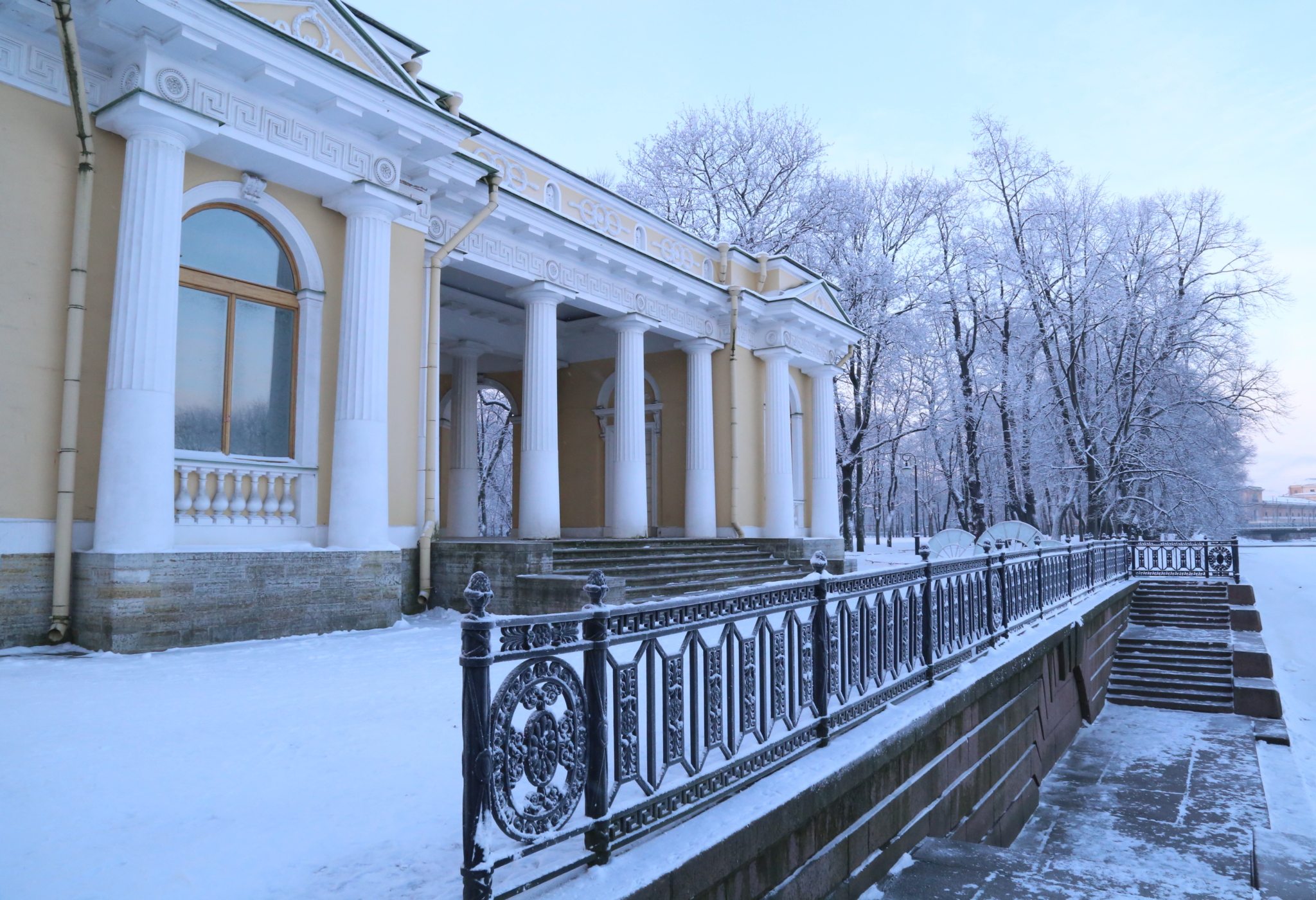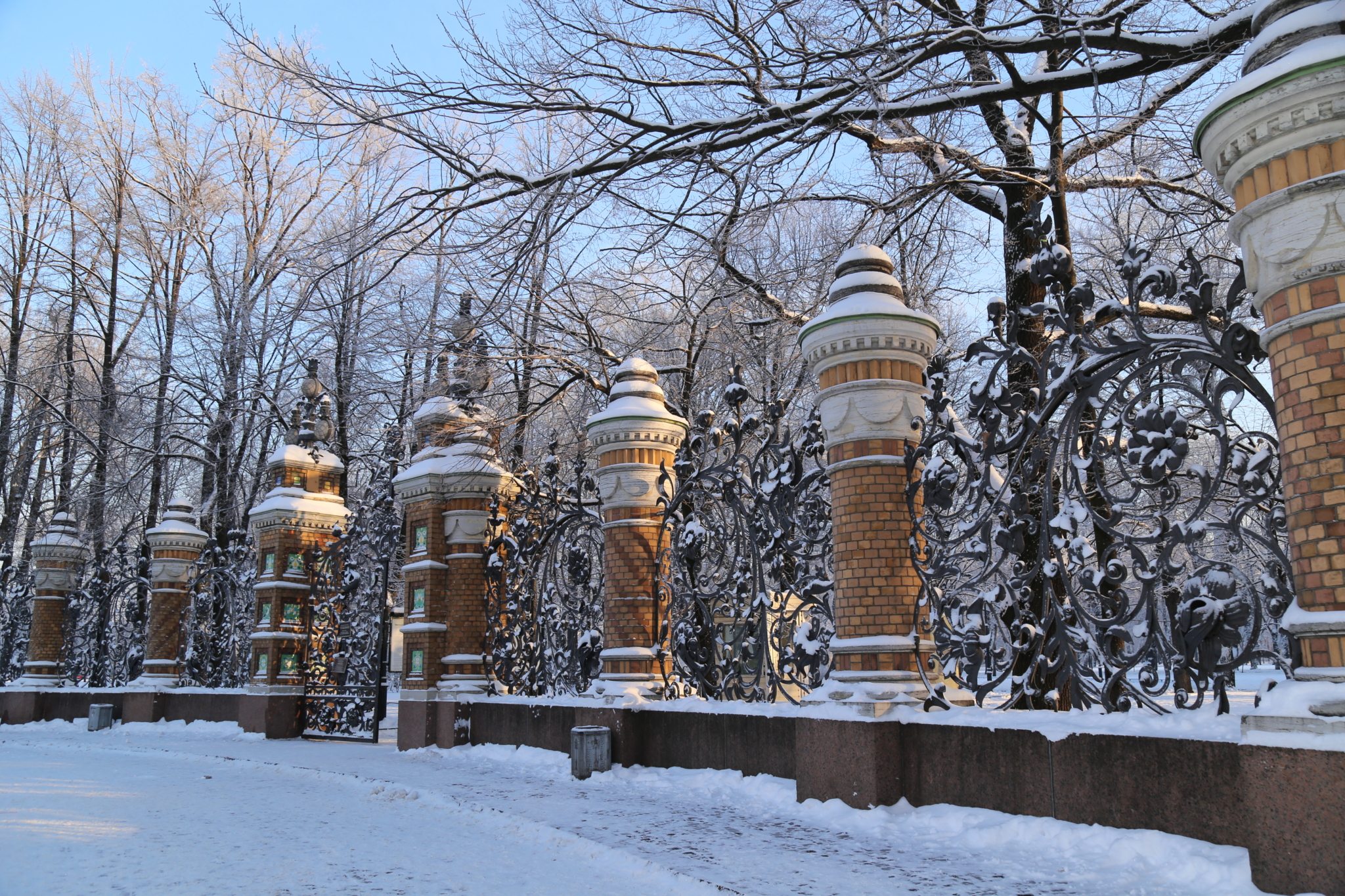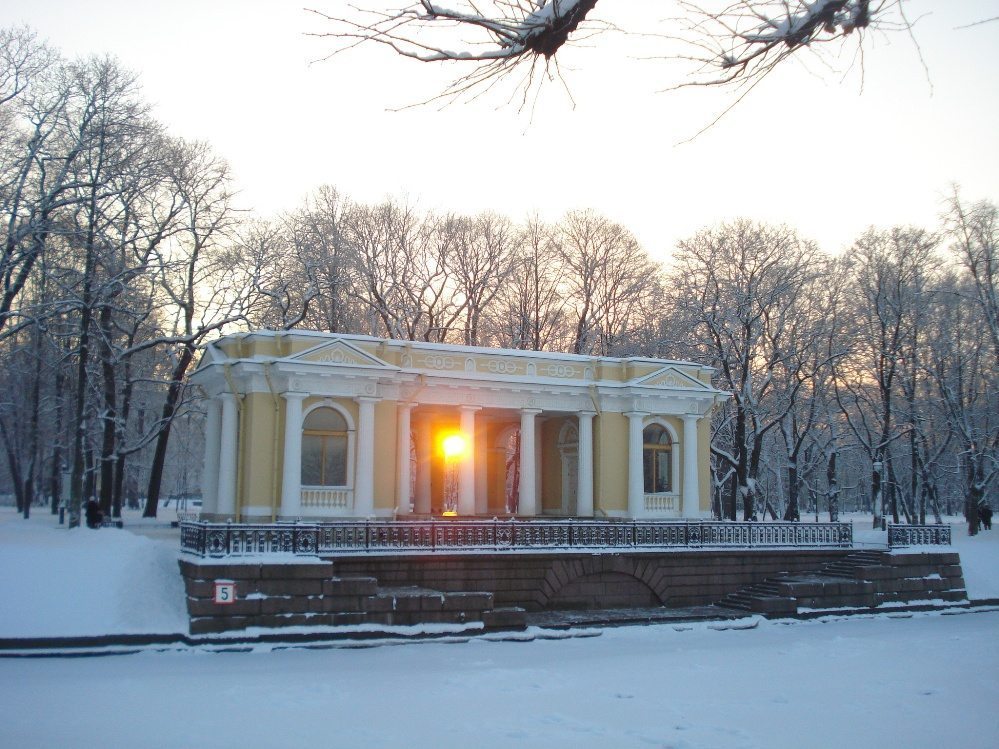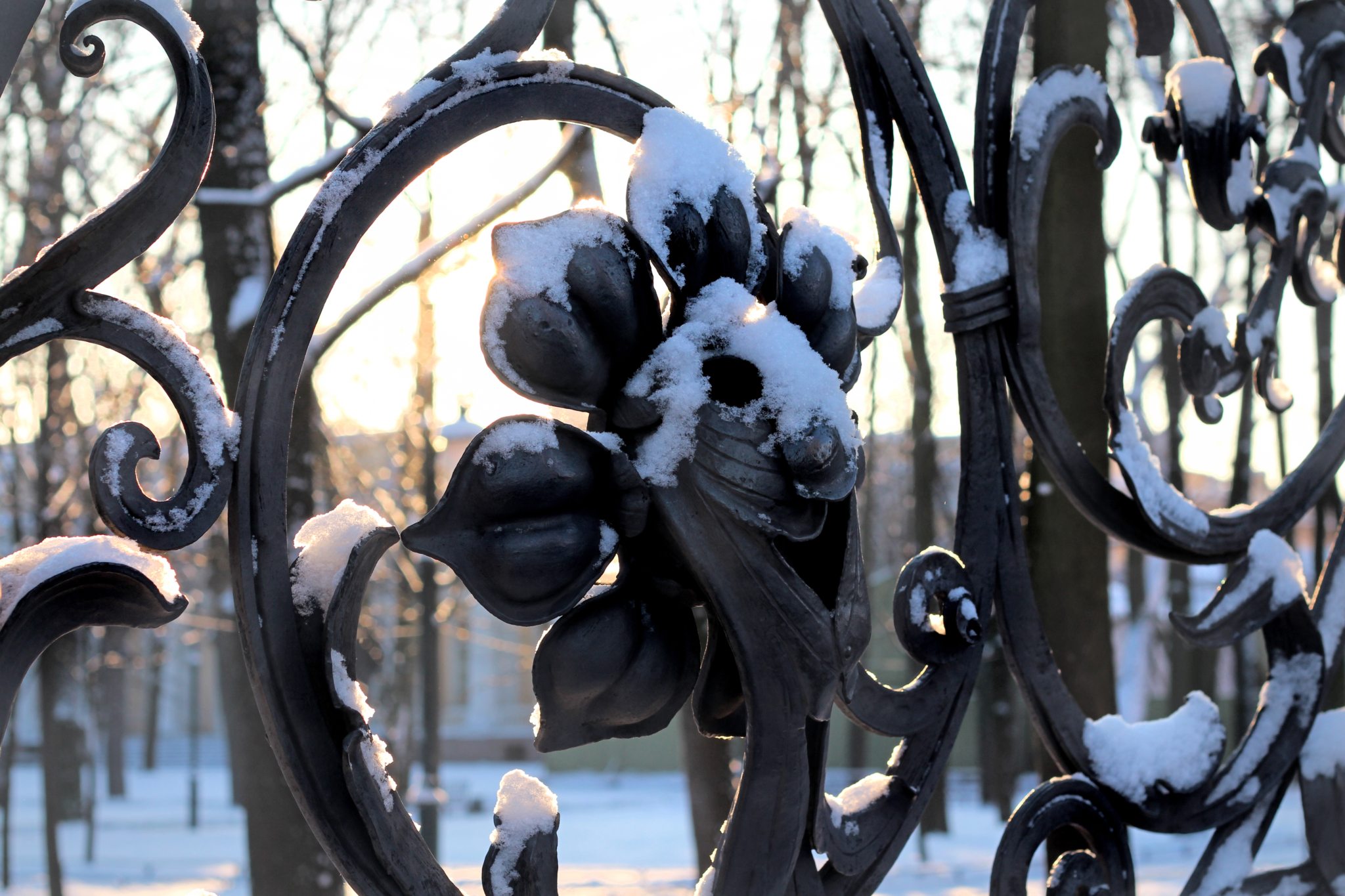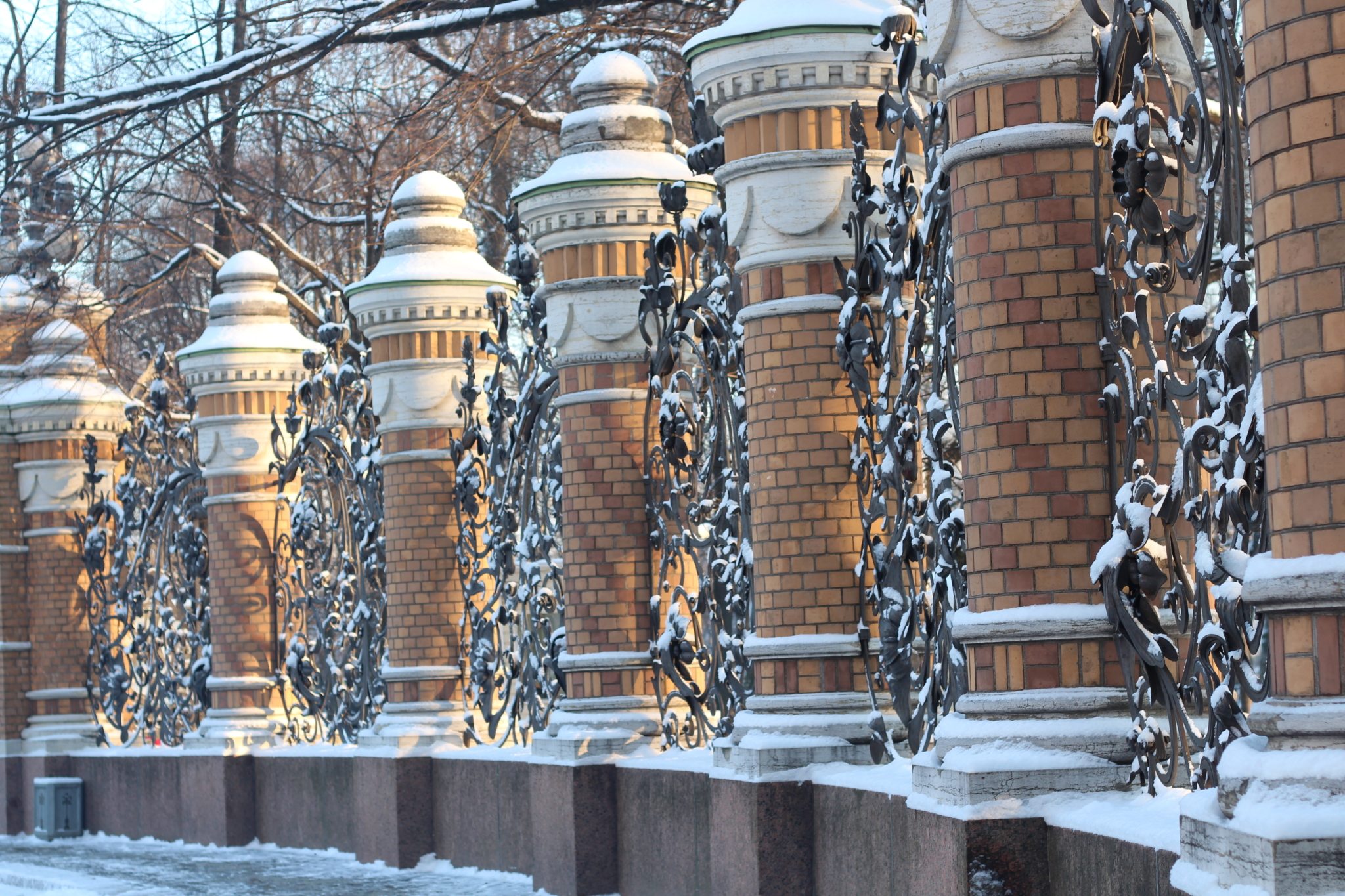
Opening times
Summer period from May to September: open daily, from 10 am till 10 pm
Winter season from October to March: open daily, from 10 am till 8 pm
In April, the garden is closed.
During high winds the Garden is closed.
Rossi Pavilion – cafe: May 1st – March 31st during garden opening hours
Address: Sadovaya street, 1
Getting here: Metro – Nevsky Prospekt, Gostiny Dvor


Mikhailovsky Garden – a unique piece of art
The Mikhailovsky Garden is one of the rarest landscape architecture monuments of the 18th and the first 30 years of the 19th centuries, it is a unique mix of two different styles of landscape art in one place, the regular style (“French”) and the landscape style (“English”). Also it is an example of a magnificent combination of the architecture of the Mikhailovsky Palace and the natural landscape of the Mikhailovsky Garden, which was designed by the architect Carlo Rossi. Mikhailovsky Garden could be considered as one of the most spectacular and notable examples of influence of change of park and garden style in landscape architecture.
The Mikhailovsky Garden is an integral part of the composition of the central St Petersburg, which includes the Summer Garden and the Mars Field. During its long life the garden has changed its layout many times following new fashion trends and owners’ tastes.
History of Mikhailovsky Garden
At first, on the lands of the current Summer, Mikhailovsky, and Ingeneering Gardens there were rural settlements, and the estate and hunting lands of Captain Konau, which is shown in a layout dated 1698. In 1716–1717, architect Leblond made a general layout of the three Summer Gardens by Peter’s request. The First and the Second Gardens were on the land of the present Summer Garden. The third garden was where, in the 17th century, there was the palace of Catherine I. The Mikhailovsky Garden was part of the Third Summer Garden and was called the Swedish Garden.
Approved by Peter the Great himself, Leblond’s plan was in fact a project of a united grand palace and park ensemble. The northeastern part, where the palace of Catherine I was situated, was the main part. The image of the palace in the layout is nearly the same as the layout of the central part of the Central Chambers of Peter I in Peterhof. Near the palace there were fir trees cut as pyramids. An alley of chestnut trees led to a big parterre with a trellis arbor and a shaped basin with a fountain and sculpture.
Russian gardening art
The southwest half of the garden was first planned as a regular fruit garden, the garden of the Russian Court where fruit trees, sweet herbs and roots were cultivated. There were also glasshouses, hotbeds, greenhouses, and cellars where a variety of exotic southern plants and fruit were grown. During the reign of Anna Ioannovna there were plots in the Swedish Garden with “reserve” maple trees, i.e. a nursery garden. There was also a jagdgarten there, a small hunting place where hares and deer were kept in special fenced places for noble hunting.
In 1741, Empress Elizabeth Petrovna offered Francesco Bartolomeo Rastrelli to design and build a new Summer Palace in the place of the Catherine’s Palace and the garden adjacent to it.
In April 1743, Rastrelli completed his work, which consisted of a labyrinth garden decorated with sculptures and fountains.
Behind the palace there was another beautiful place with two shaped ponds, a fountain, and a figured lace flower garden. The Swedish Garden was somewhat changed, the land being divided into geometrical parts by a crossing of longitudinal and transversal lines, with five rectangular ponds dug in the centre. It can thus be said that the Third Summer and Swedish Gardens became another example of the Russian park and gardening art of the 18th century.
By the instructions of Paul I, the palace of Elizabeth Petrovna was demolished and St Michael’s Castle was constructed in its place in 1787-1801. The land adjoining the castle included the entire Rastrelli and Swedish Gardens. The Rastrelli Garden kept two of its shaped ponds with trees planted in a line by the perimeter. In the Swedish Garden, there remained four ponds, which were linked by an underground canal that was laid to the western shaped pond. Thus, the unique of pond and canal system was created.
St Michael’s Castle was built as an unassailable fortress with lifting bridges surrounded by water. Resurrection, Church and Circular Canals around the castle and the front square with the equestrian statue of Peter I form the grand architectural ensemble of the 18th century, which has no parallels in the world architecture.
The Third Summer Garden got the name of the Upper Summer Garden or the Mikhailovsky Garden. The layout of the Swedish Garden and its purpose as an orchard (in the western part) and as a walking garden (in the eastern part) did not change. Unfortunately, the unique ensemble of St Michael’s Castle did not remain the same for a long time. After assassination of Paul I, the castle stopped existing as the emperor’s residence. The imperial family moved out of it, and the park and canals gradually fell in disrepair. In 1822, the castle was given to the MainEngineering School.
Rossi’s heritage
In 1819, a new stage of the garden establishment began, to which architect Carlo Rossi contributed much. By the order of Alexander I, Carlo Rossi completed one of the biggest ensembles in the place of the old glasshouses that adjoined the Upper Summer Garden from the south. This consisted of the Mikhailovsky Palace for Grand Duke Michael Pavlovich, redesign of the Mikhailovsky Garden, and accomplishment of a square in front of the southern facade of the palace.
In fact, it was the last palace ensemble built within the precincts of the city. The final project of the redesign of the garden near the Mikhailovsky Palace was granted the high approval in April 1822. Carlo Rossi worked on this project together with architect Adam Menelas. In 1823, Emperor Alexander I approved Rossi’s projects rearranging the plot around St Michael’s Castle. According to the project, the Church Canal was filled up and the eastern figure pond in the Mikhailovsky Garden was miniaturized.
Only the Resurrection Canal along the southern facade of the castle was left. However, Rossi kept the unique water system (ponds of the Mikhailovsky Garden and canals around St Michael’s Castle) and complemented it with a new underground collector, which linked the big pondto the Moika River and provided extra circulation of water.
A quadrangle of two rows of cut trees was planted around St Michael’s Castle. In Carlo Rossi’s project, the composition ofthe Mikhailovsky Garden preserved the layout of certain pieces in accordance with the projects of Leblond and Rastrelli.
Carlo Rossi made a model “English” garden where all the basic layout techniques of the English landscaping architecture of the years 1715–1760 were used with great expression. In the Mikhailovsky Garden in front of the palace facade, Rossi put a big meadow (Shrovetide Meadow) of an irregular oval form, which was framed by the alley and included in the regular layout.
Another typical technique of the “English” garden design is ponds with irregular shapes. This is why the architect turned geometrical basins into picturesque ponds of different size and curvy “natural” shape and backfilled the small rectangular ponds in the centre of the garden.
Another traditional element of a landscape park, a pavilion with a quay on the Moika River, was added to the garden in the place where the foundation of the first wooden palace of Catherine I had once been. This pavilion was intended for romantic encounters of the summer evenings, for tea ceremonies or card plays. There were many flower gardens and flowering bushes on the territory of the Mikhailovsky Garden. The most valuable thing Rossi preserved was the system of alleys, which formed the basis of the composition. Alley plantings were partly preserved and supplemented with picturesque groups of trees. Until the Revolution the garden was a palace garden and ordinary citizens were not allowed in there. The further story of the Mikhailovsky Garden is a tragic one, like the story of all the historic territories.
Mikhailovsky Garden in 20th century
In 1902, the small eastern pond shallowed and was filled up. At the same time, due to the construction of the Resurrection Church after Alfred Parland’s project and a new garden railing, the rear part of the garden was considerably abridged.
In 1922, the Garden received a name of the InternationalOrganization for the Assistance to the Revolutionary Fighters Garden. Under such a «poetic» name the former Mikhailovsky Garden received the status of an ordinary city park. The English meadow was crossed by a footpath; a stage and a number of pavilions were built for exhibitions to be held there in 1924. Later, these were replaced with playgrounds for children. In the early 1960s, it was allowed to build a tennis-court and a public toilet here.
During this period trees and bushes were planted randomly. The trees grew larger so that the garden façade of the Mikhailovsky Palace could no more be seen, and neither was the perspective leading from the Palace to the Field of Mars. Every year affected the once excellent historic landscape…
The inspection in 2000 revealed the critical state of the garden. The reconstruction project was prepared by the State Institute for Architecture in Saint Petersburg in 2001. It used the design by Carlo Rossi of 1826 as a basis. According to the project it was supposed to revive the historical significance of the Mikhailovsky Palace-Mikhailovsky Garden complex.
The reconstruction project presupposes preservation of the landscape English style in the centre of the garden, with regular French planning along its perimeter.




